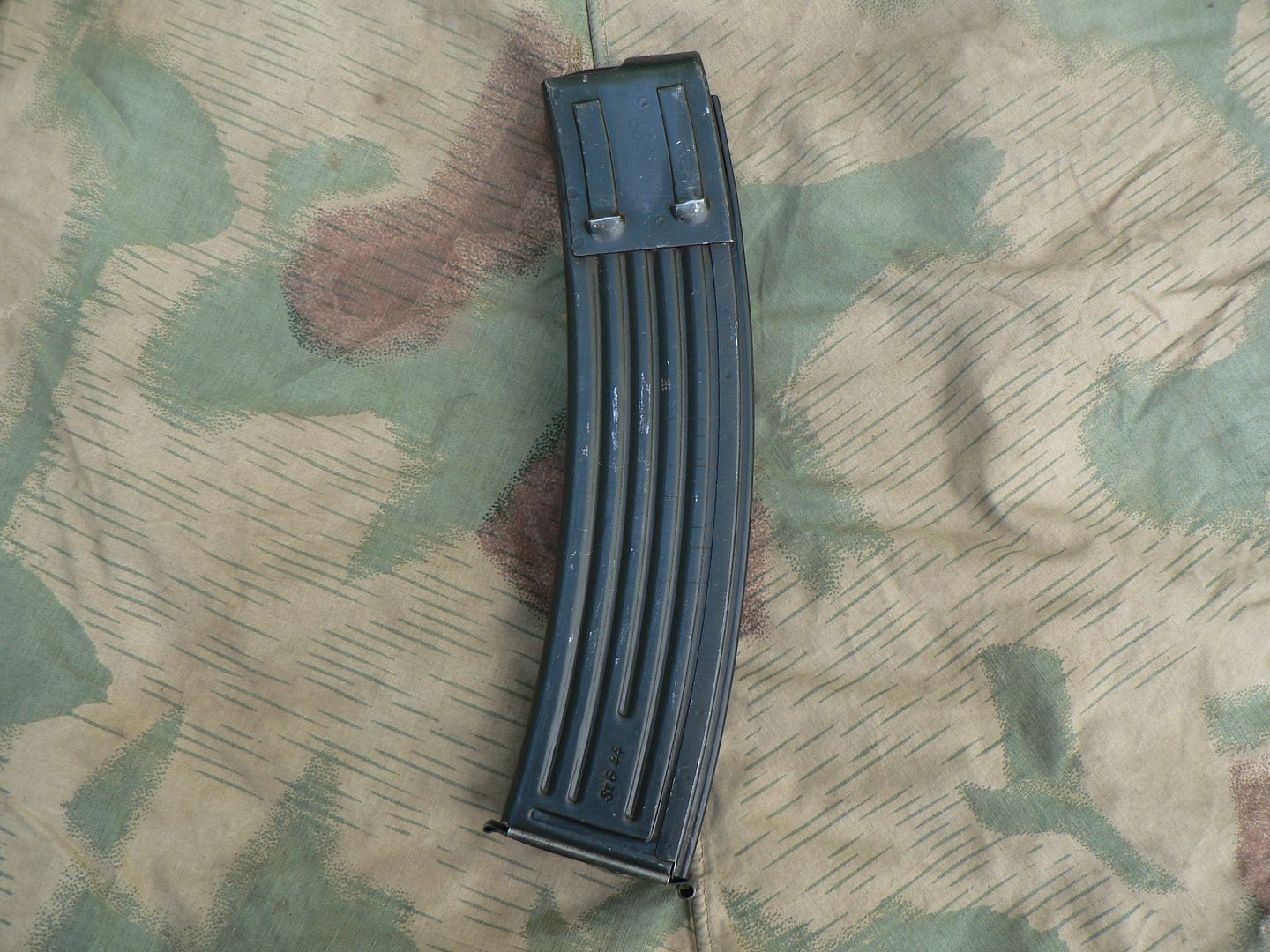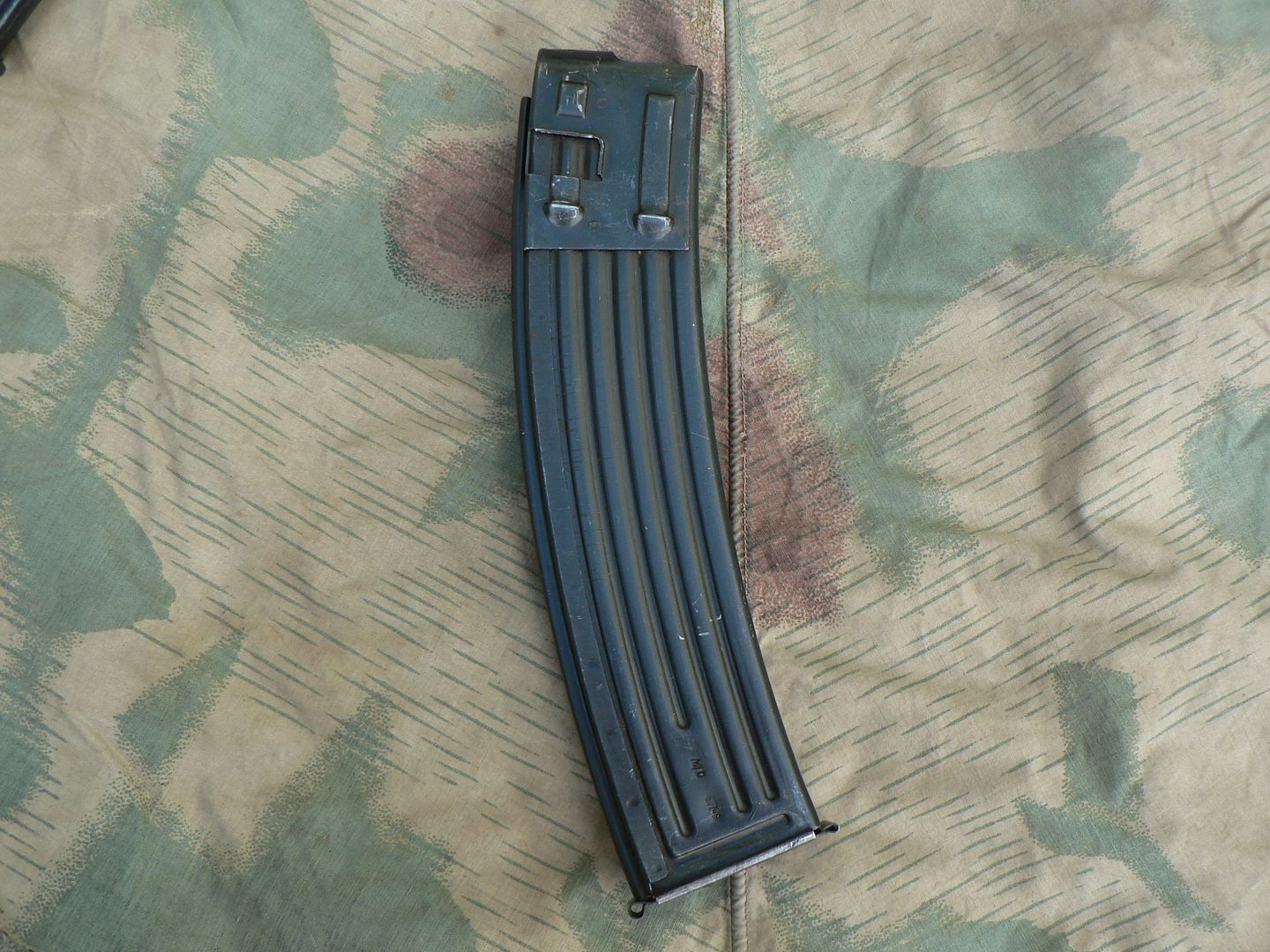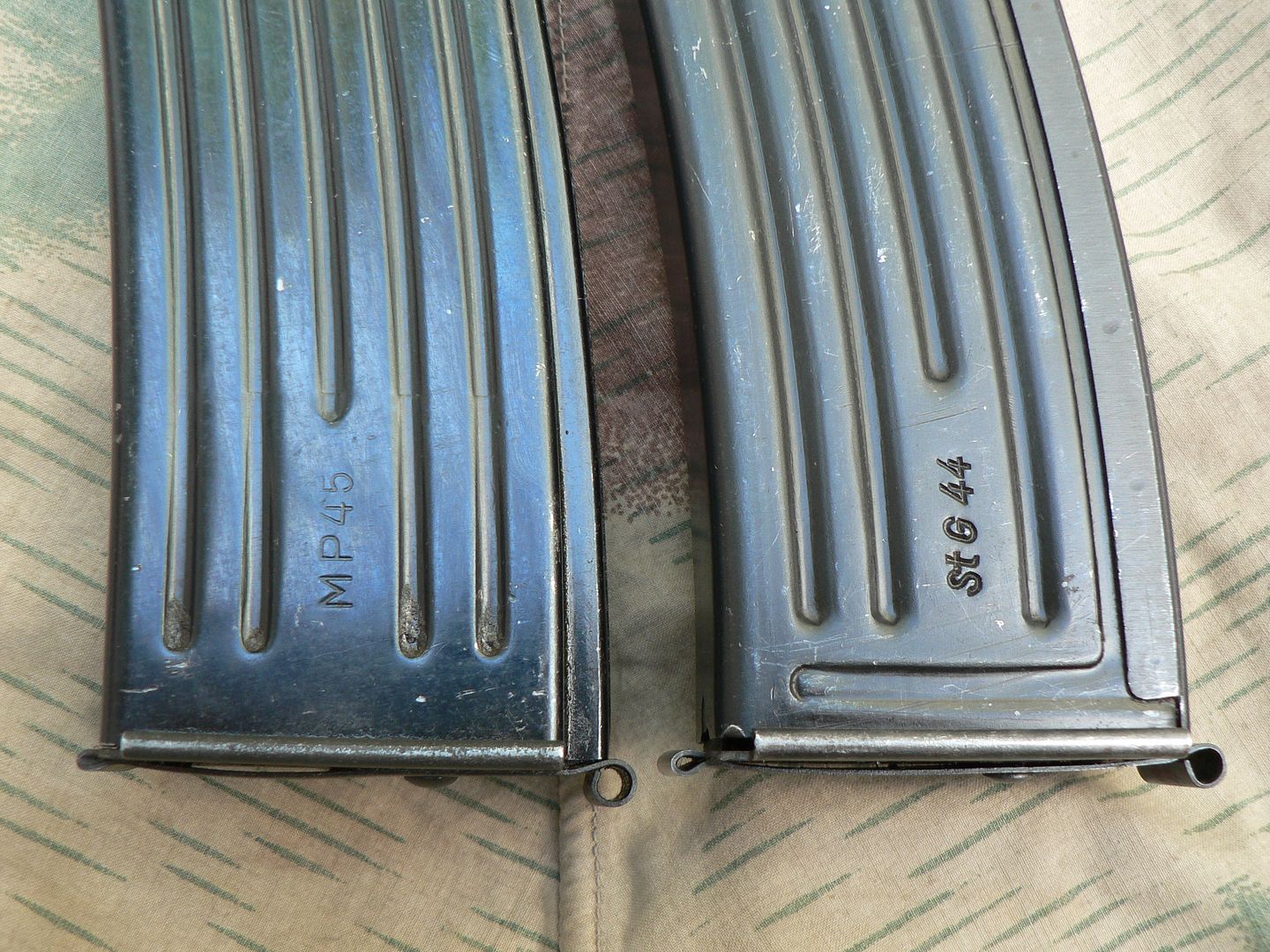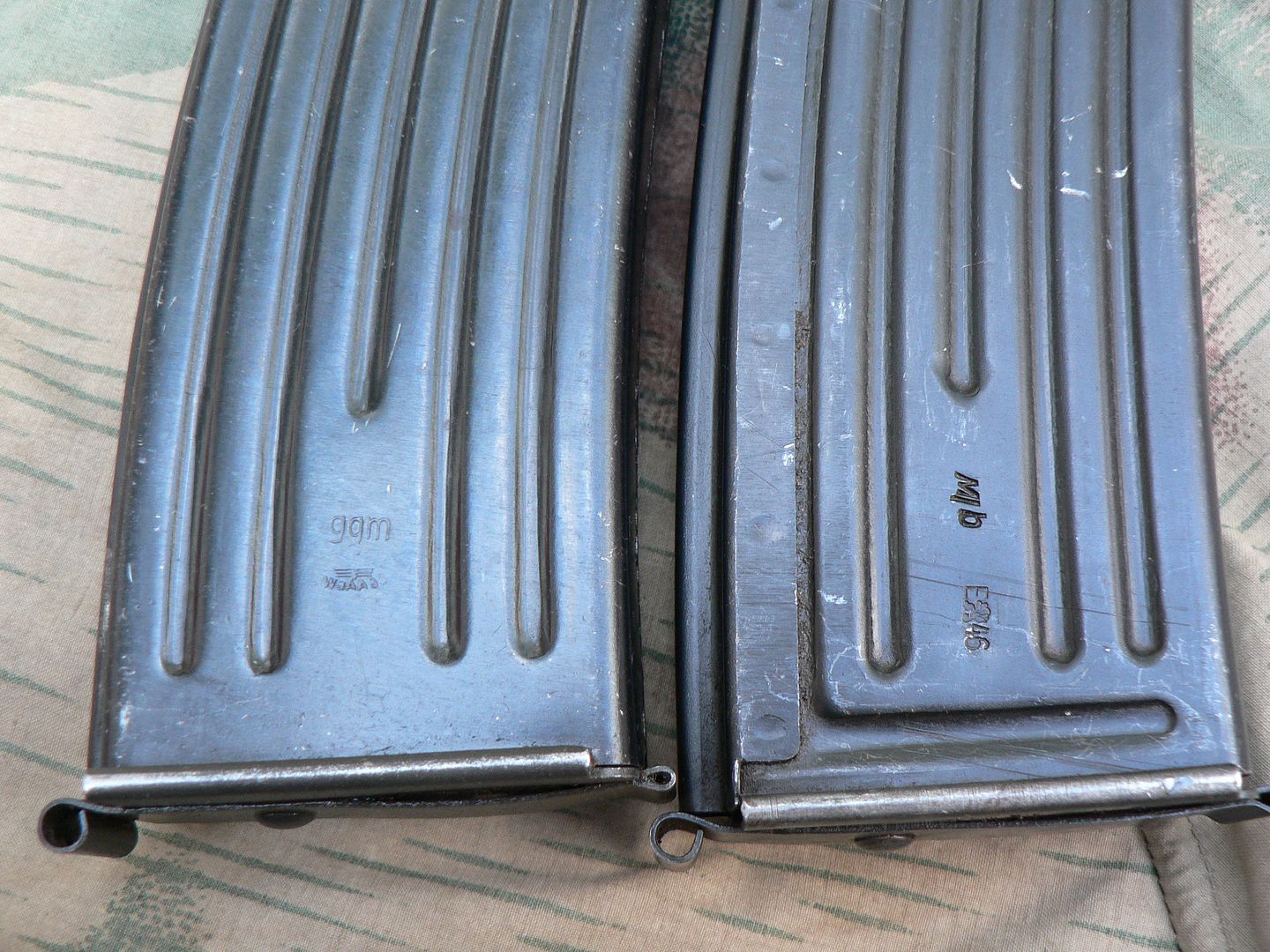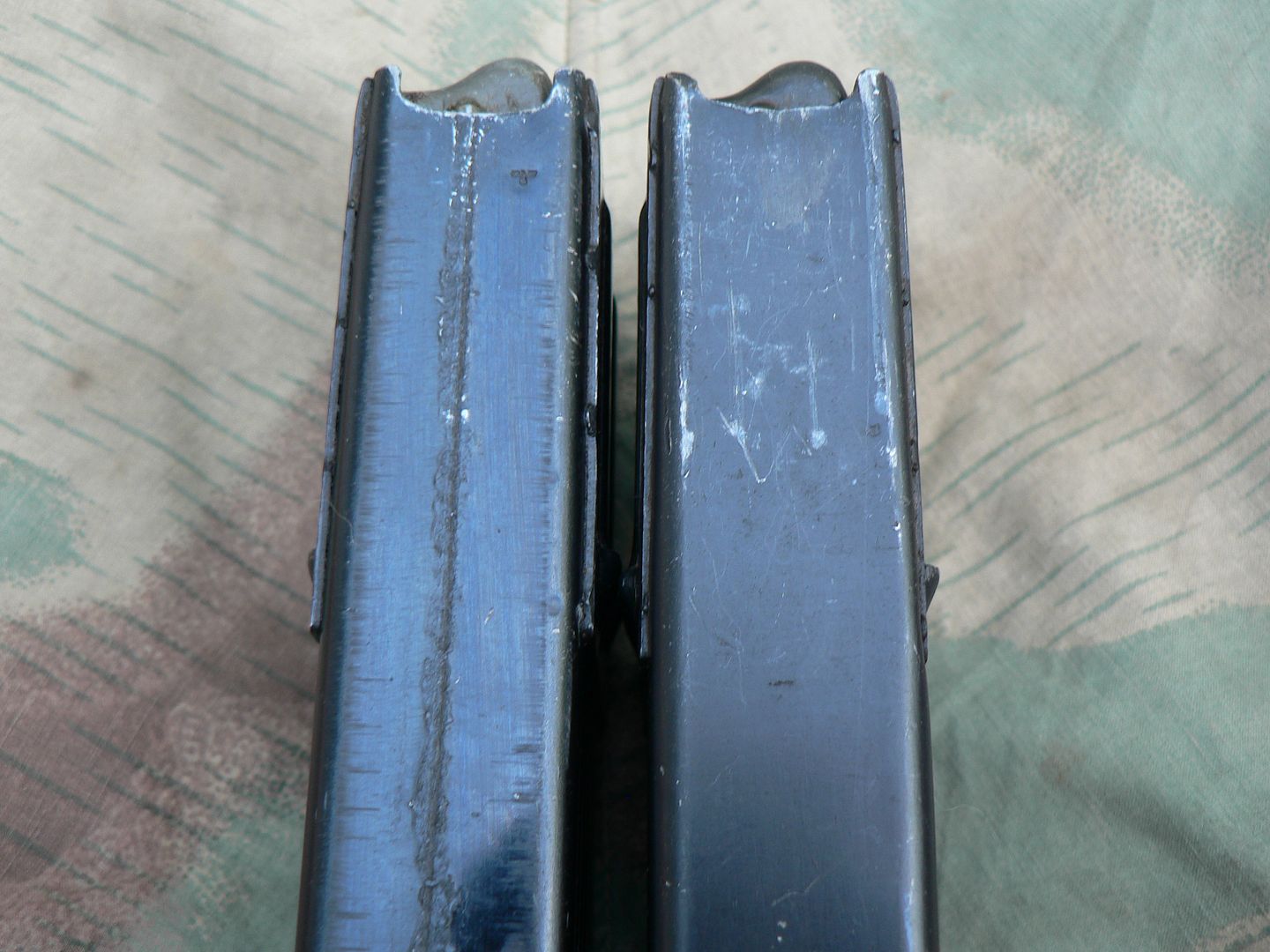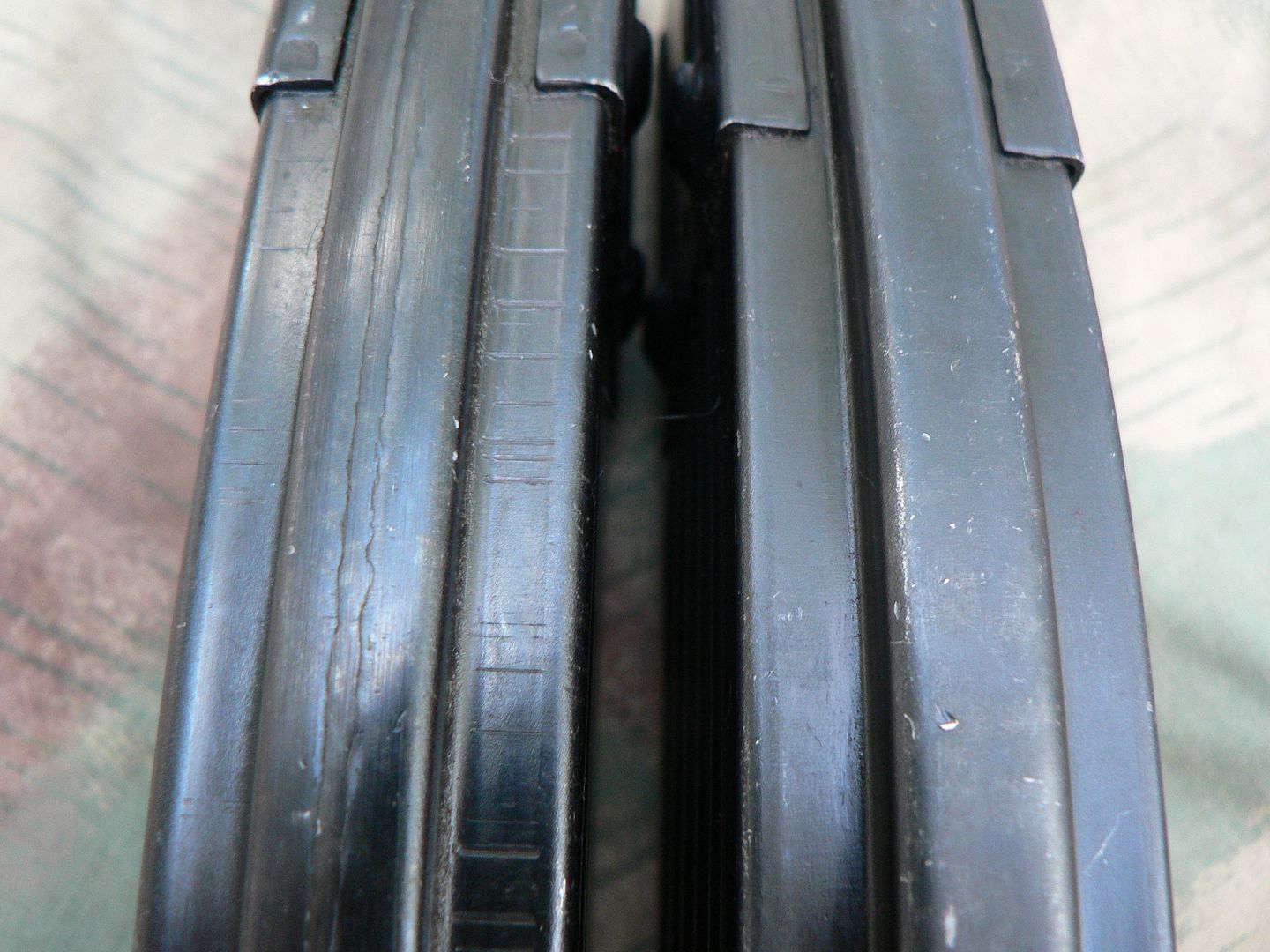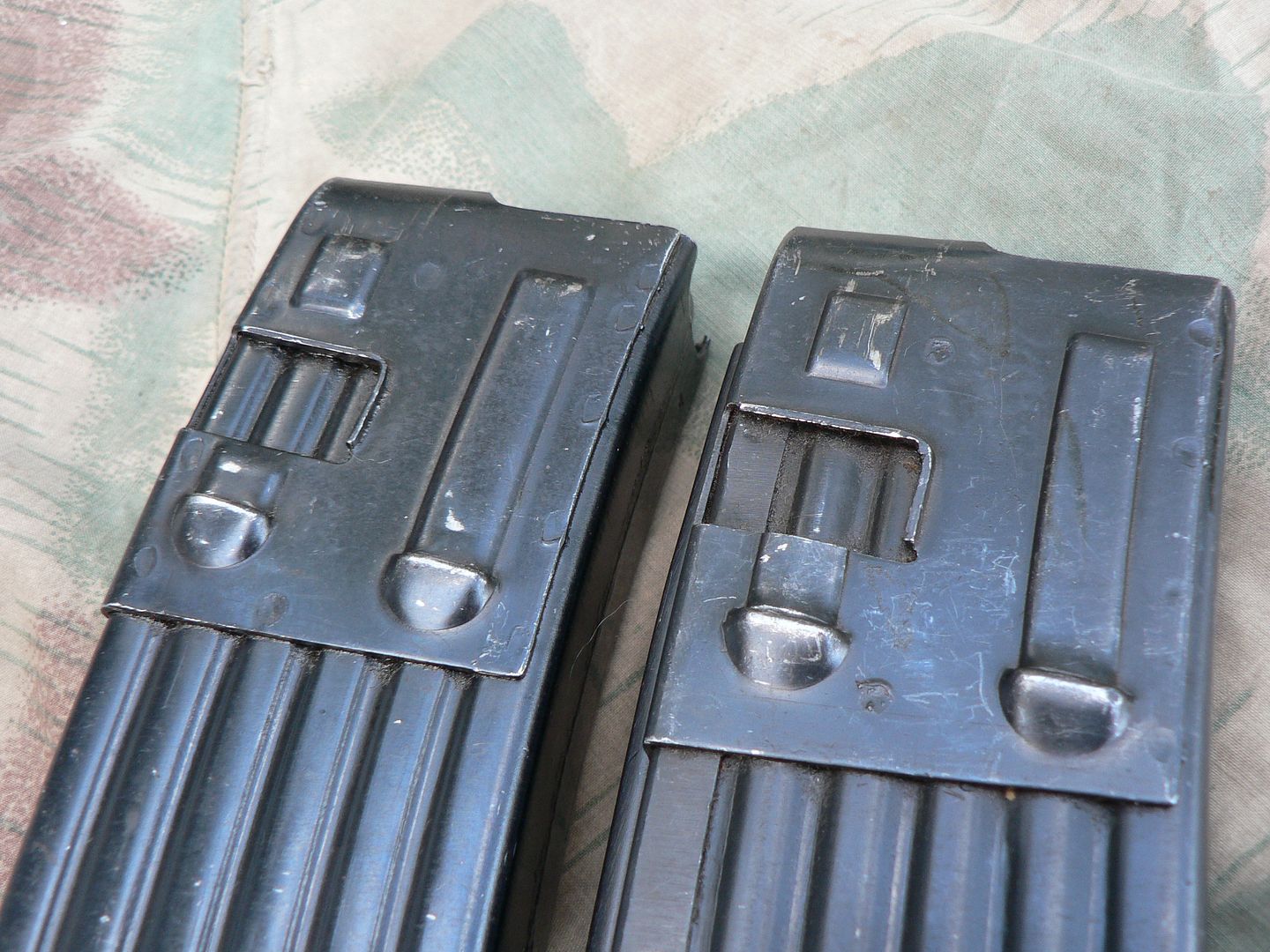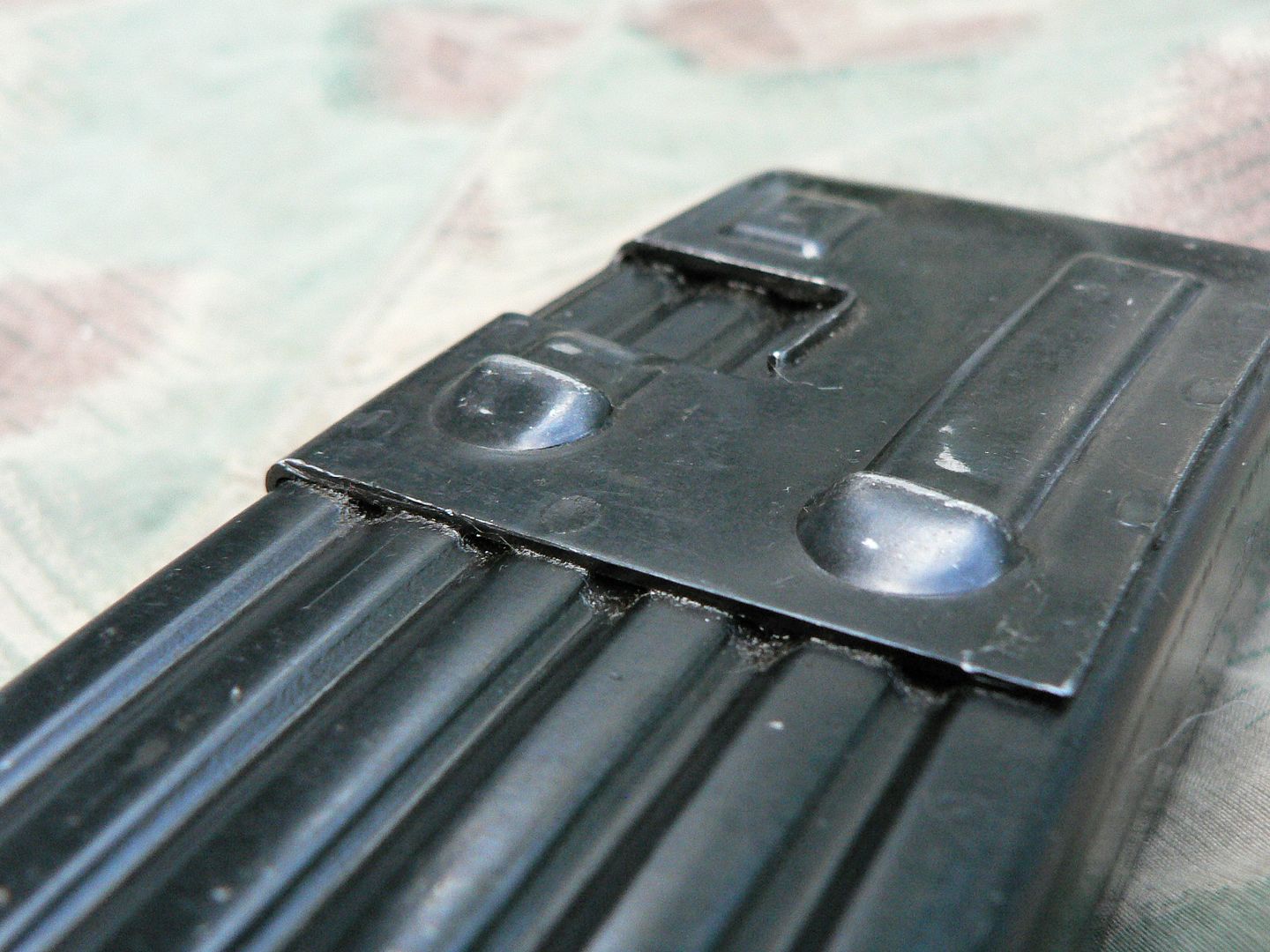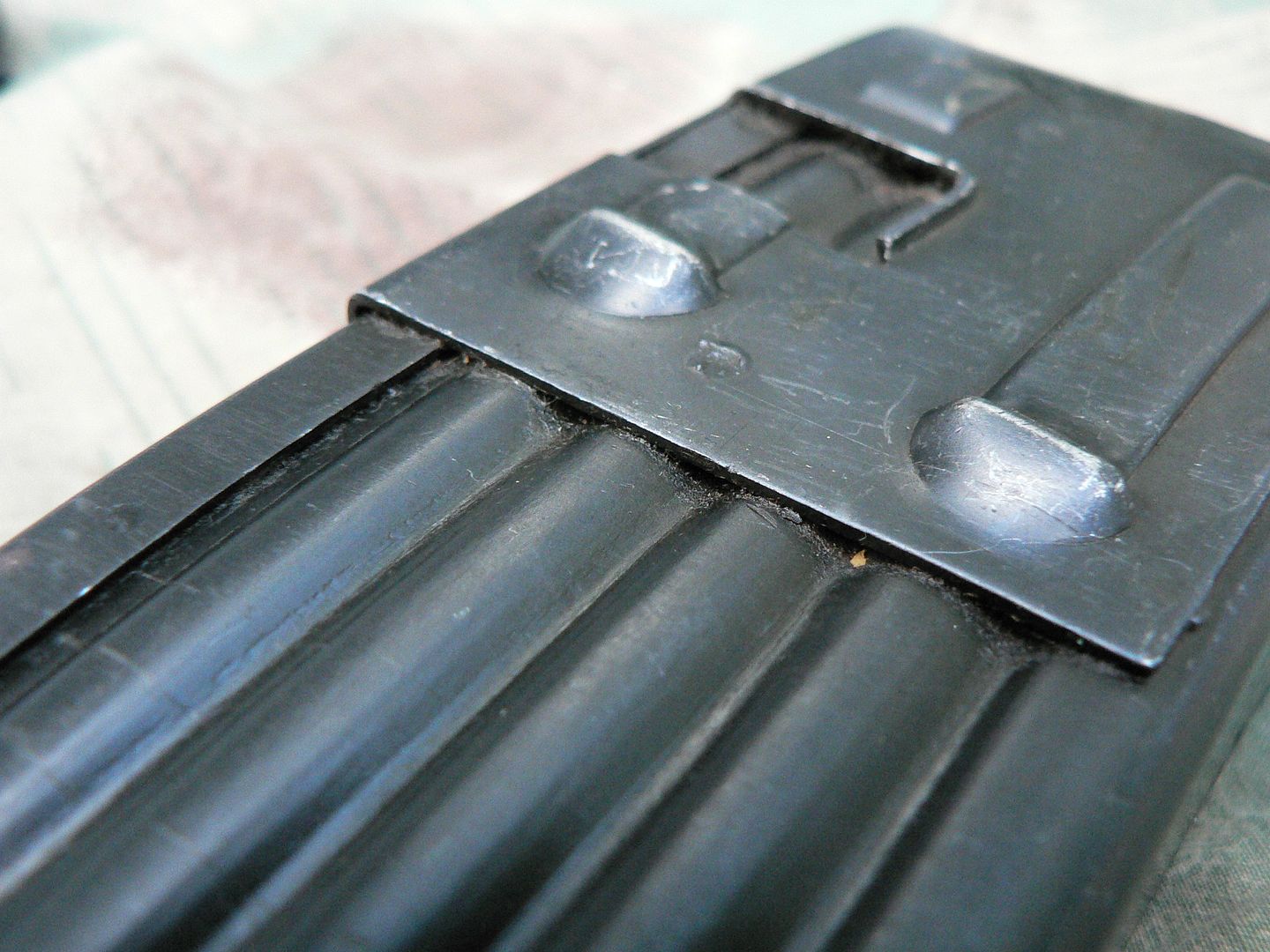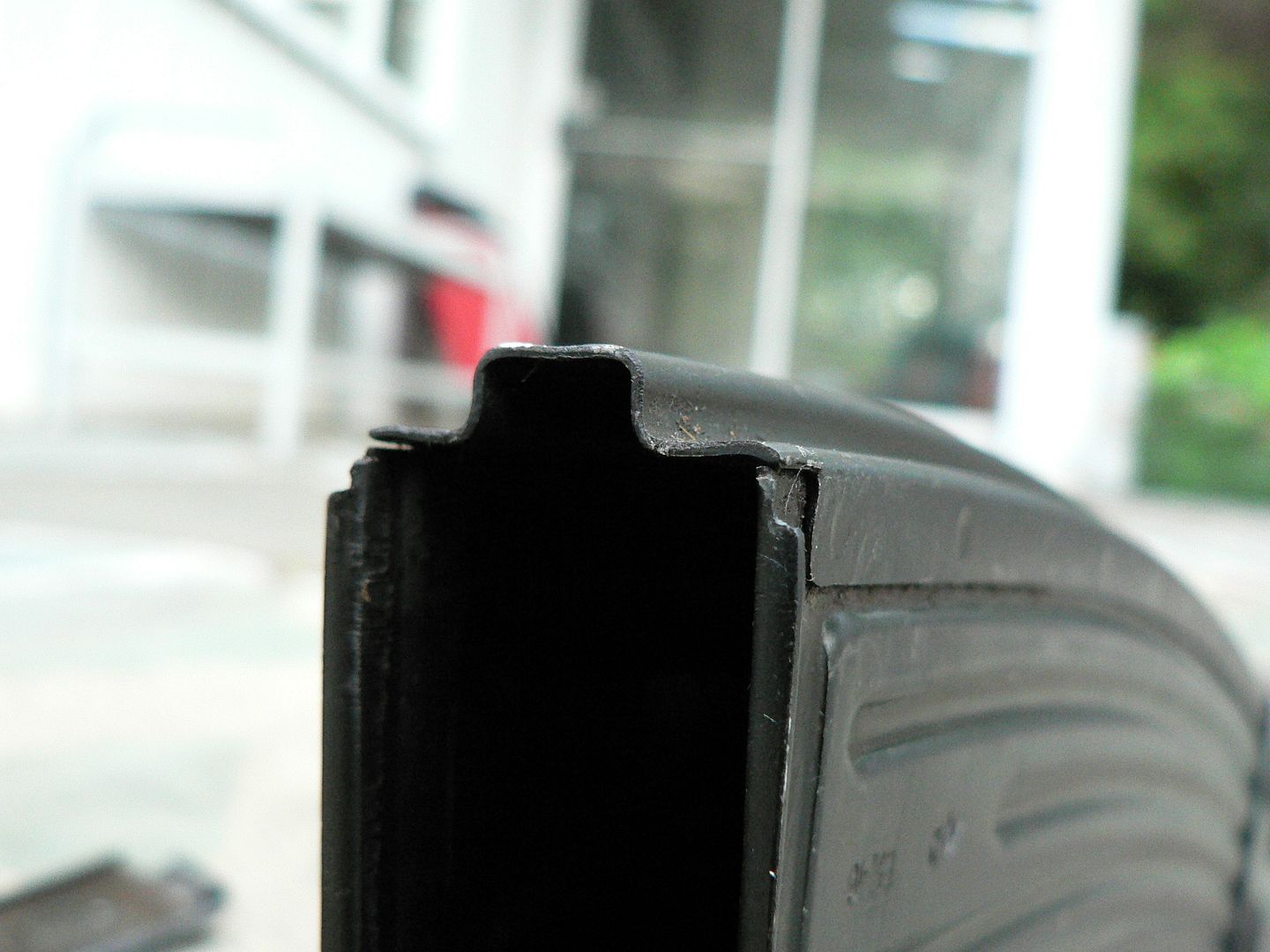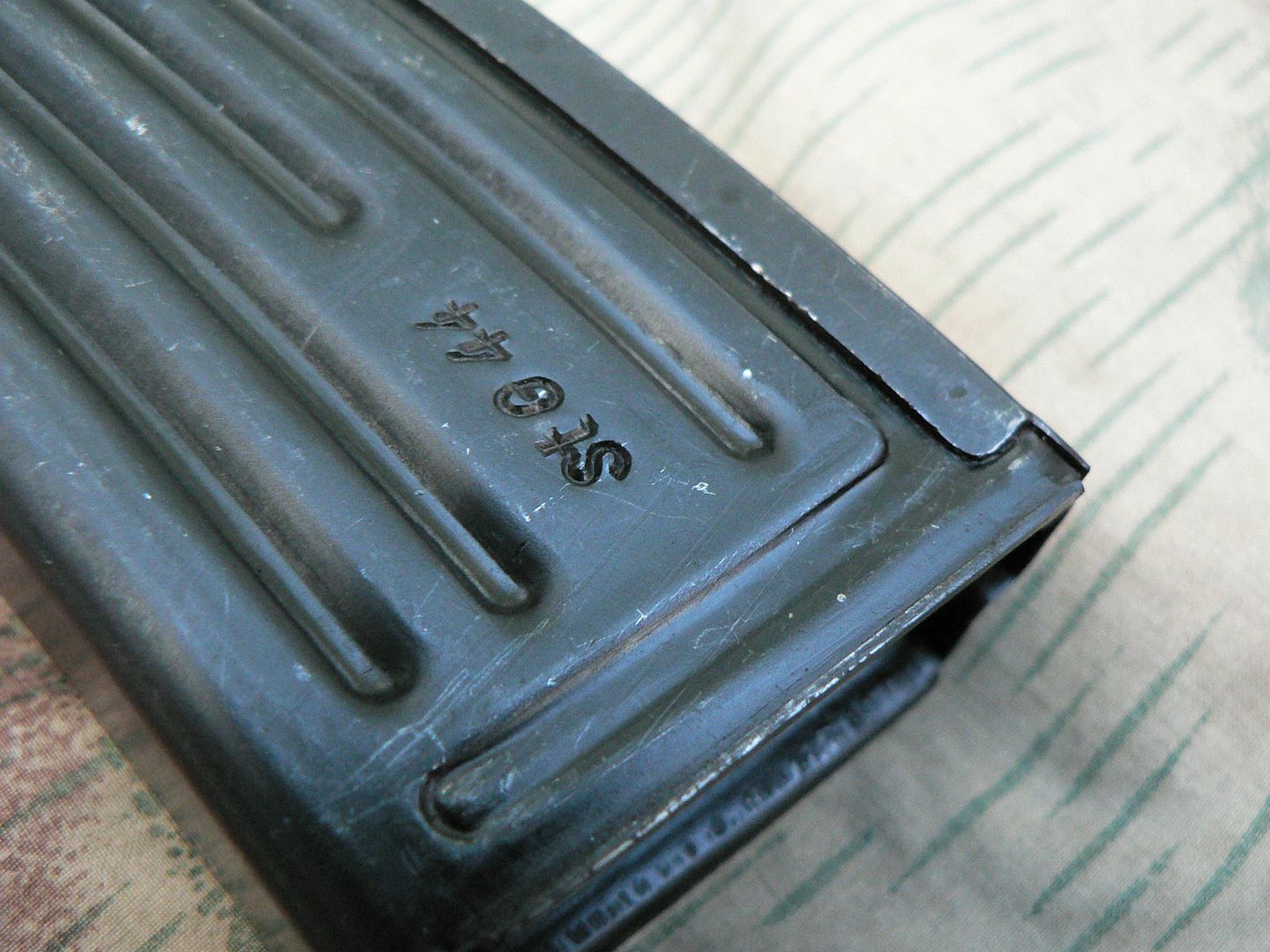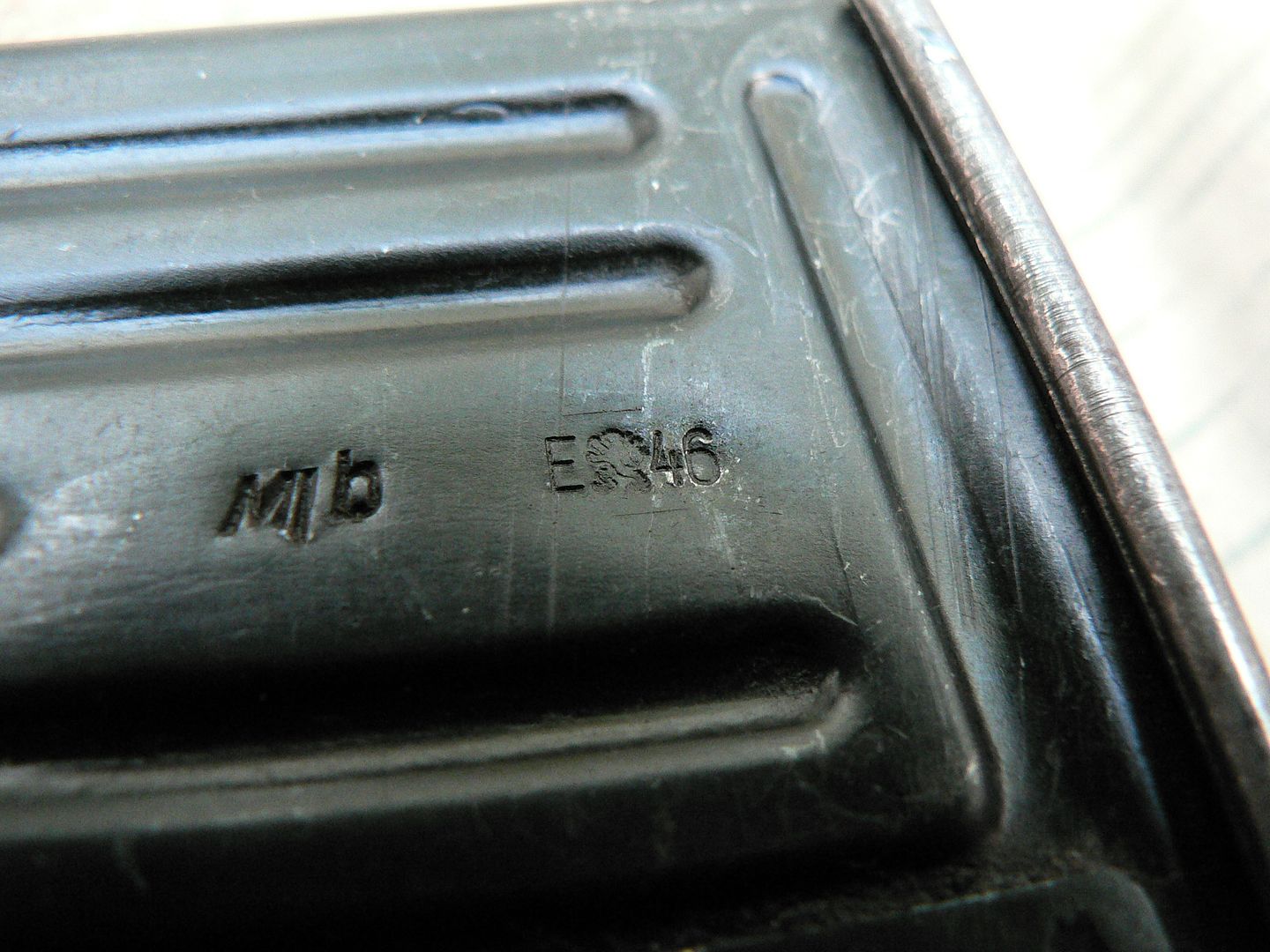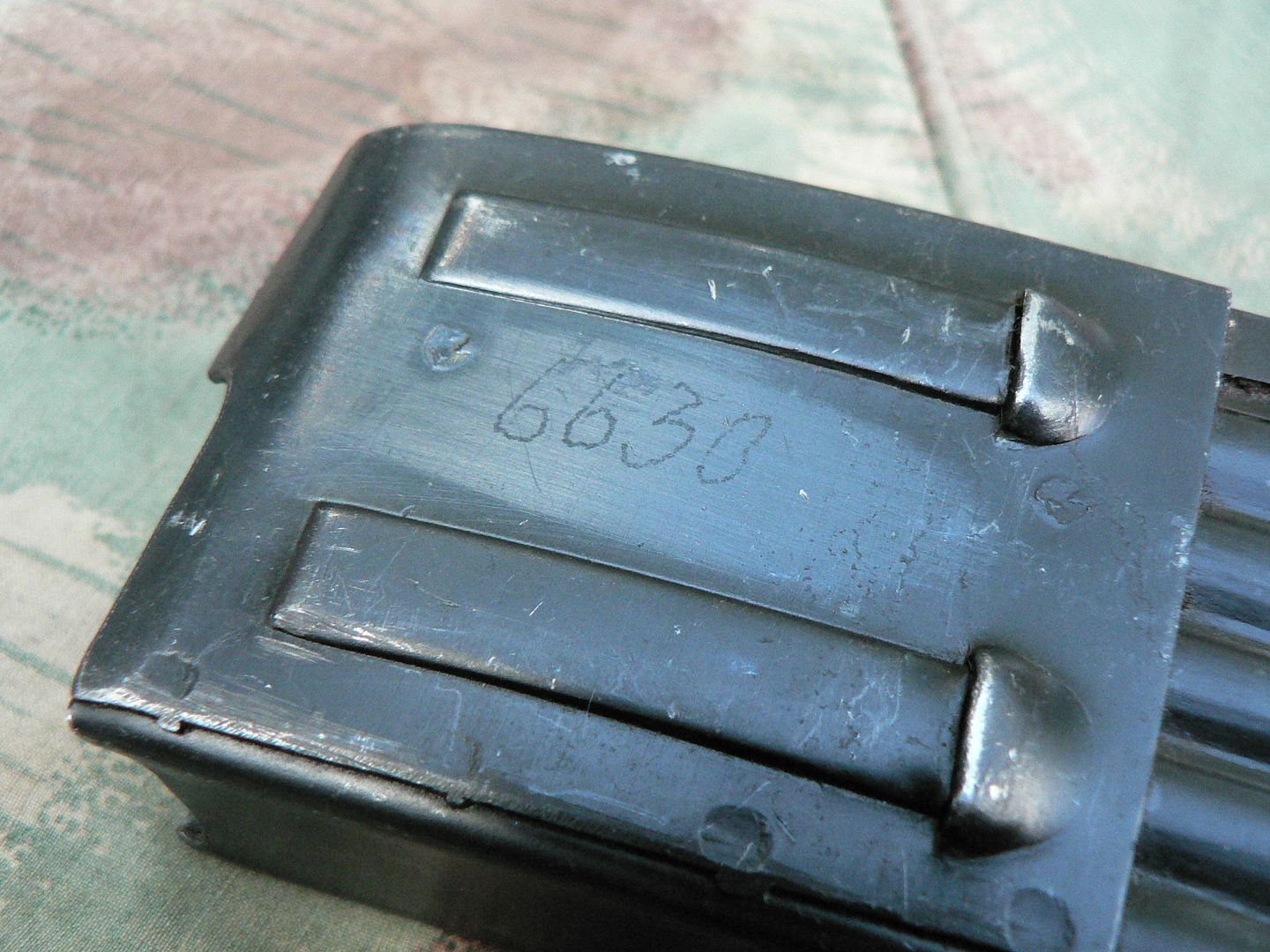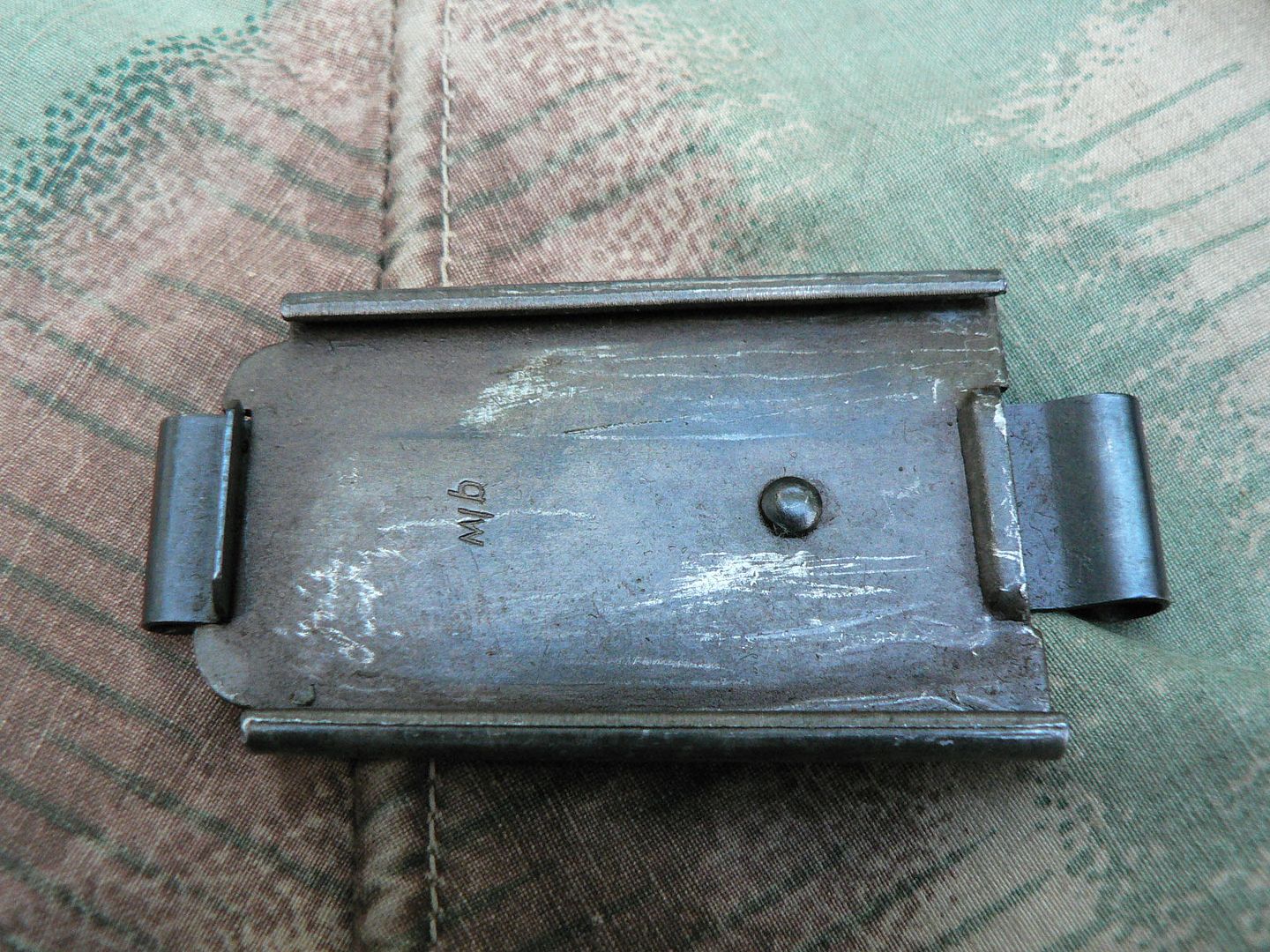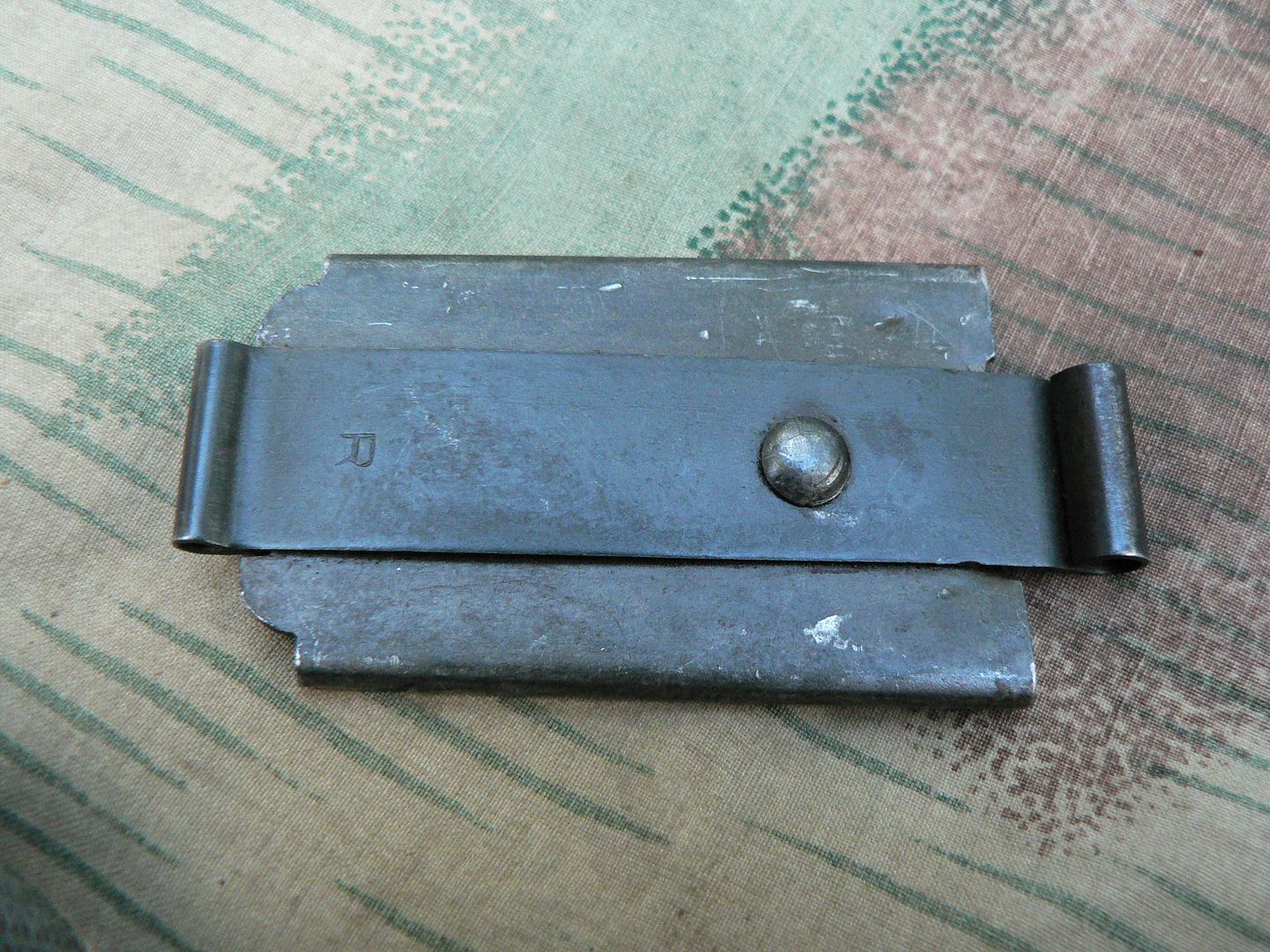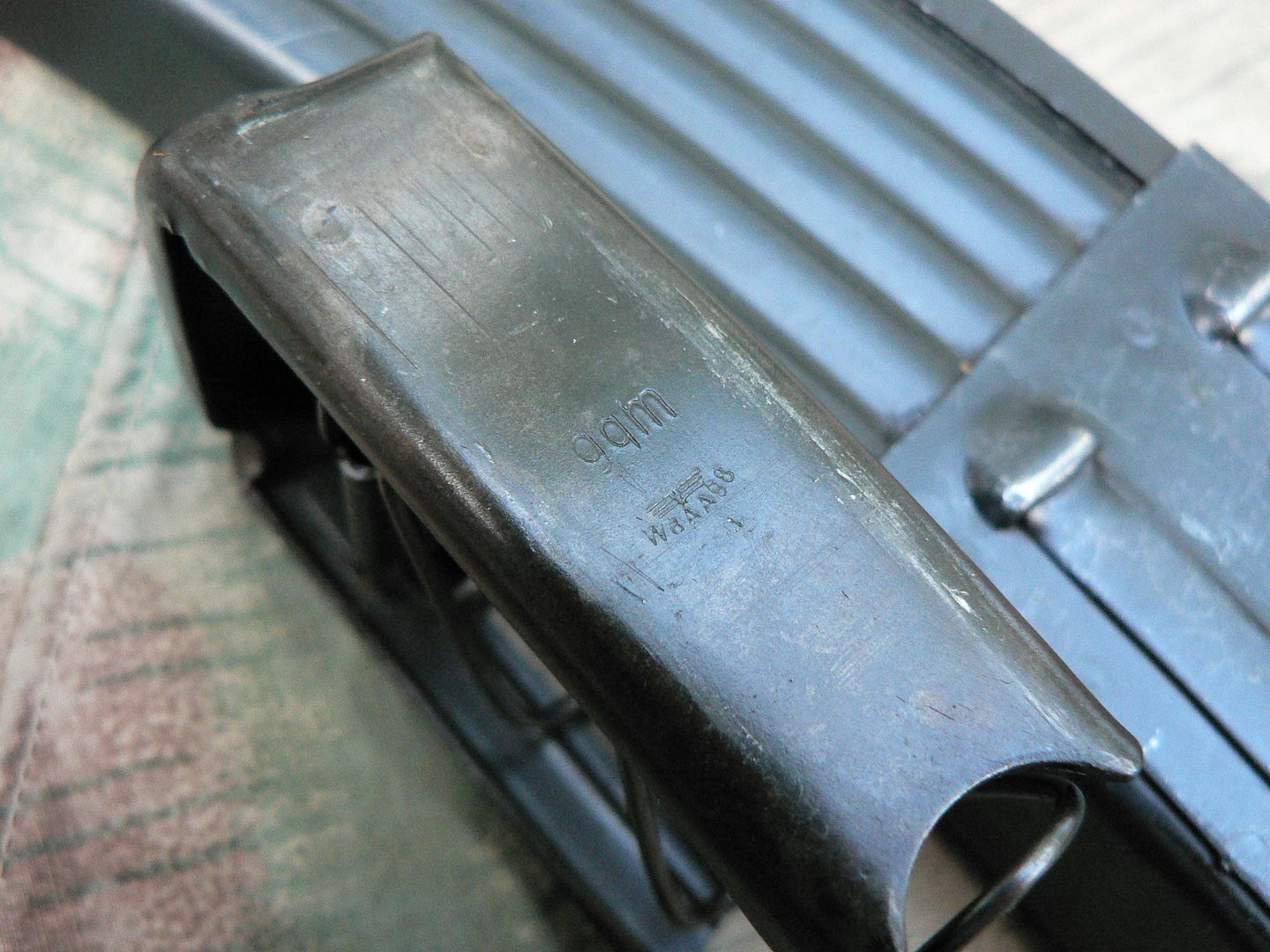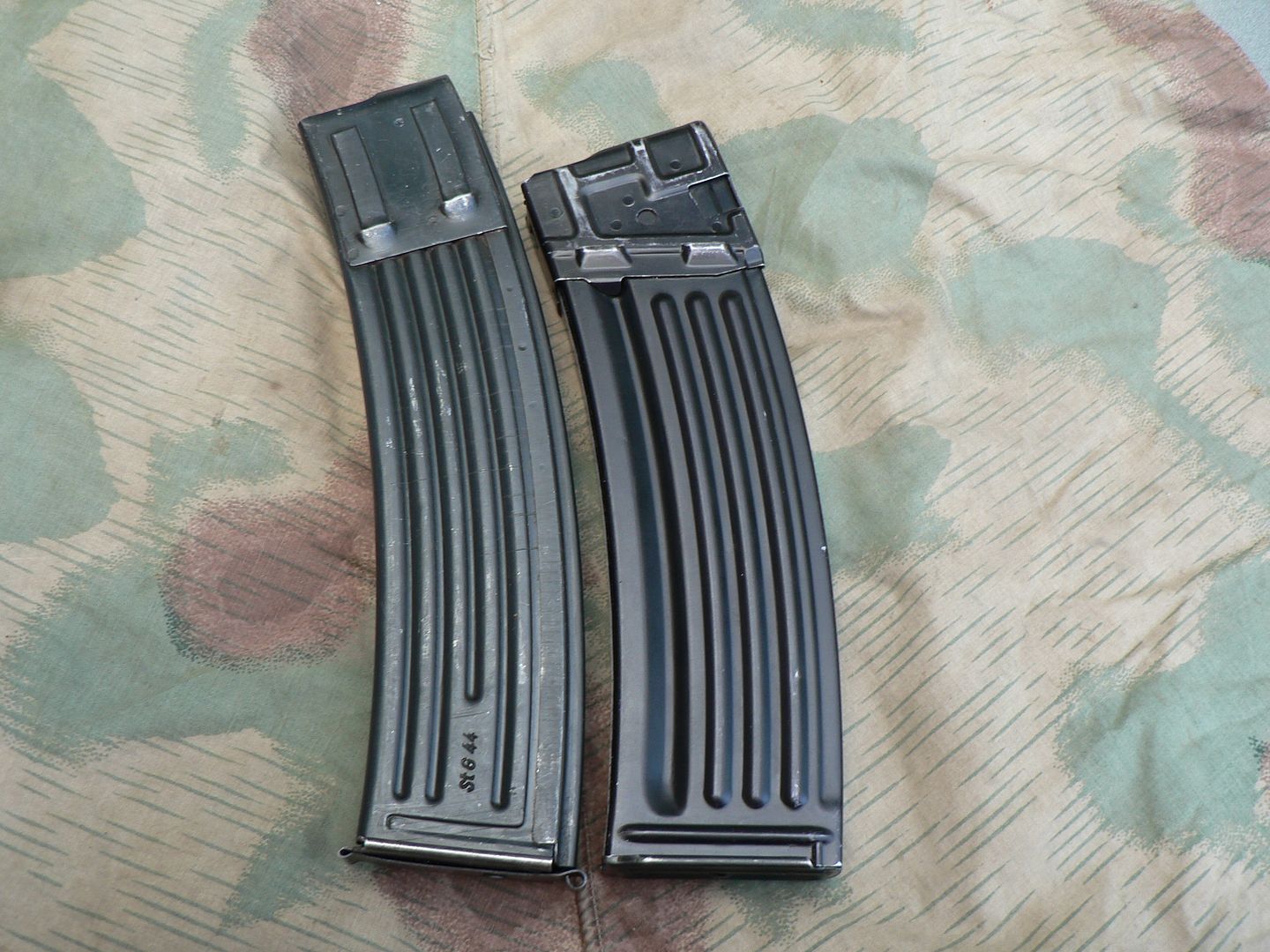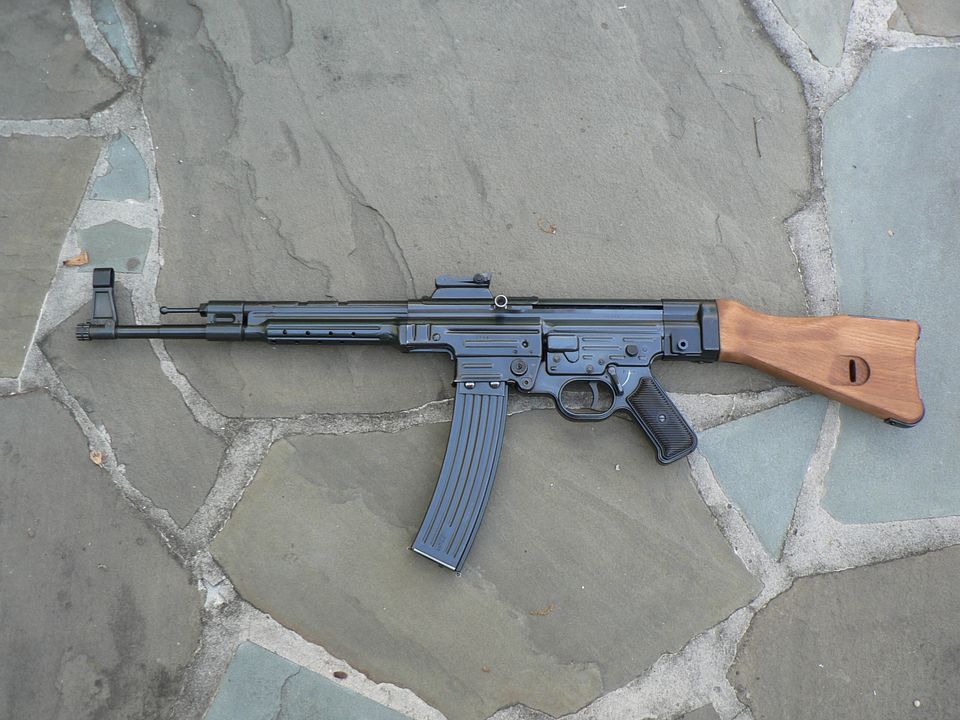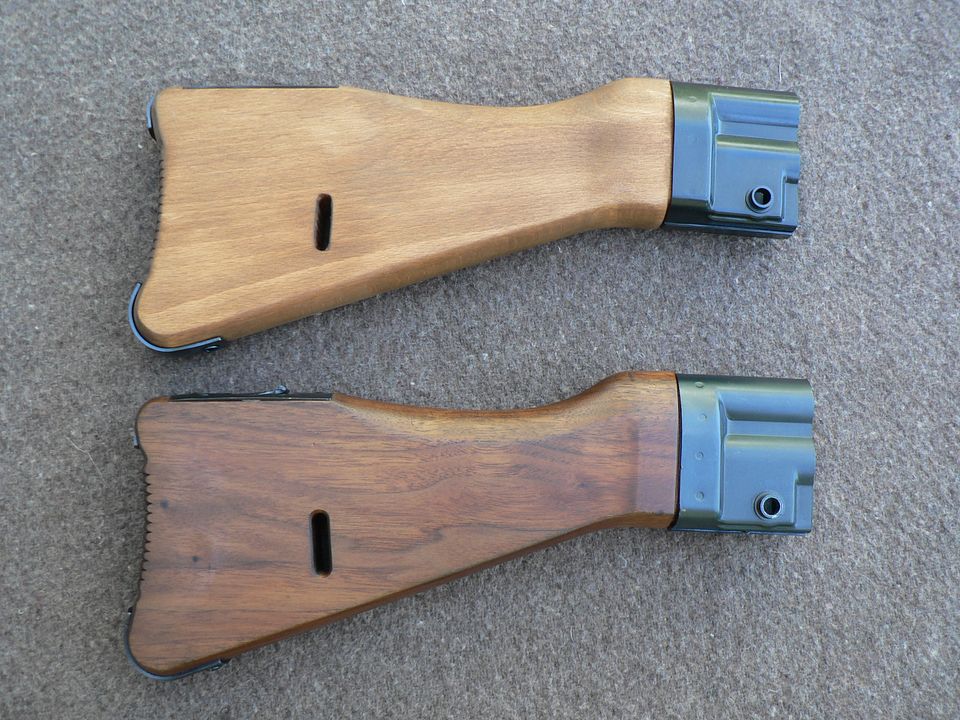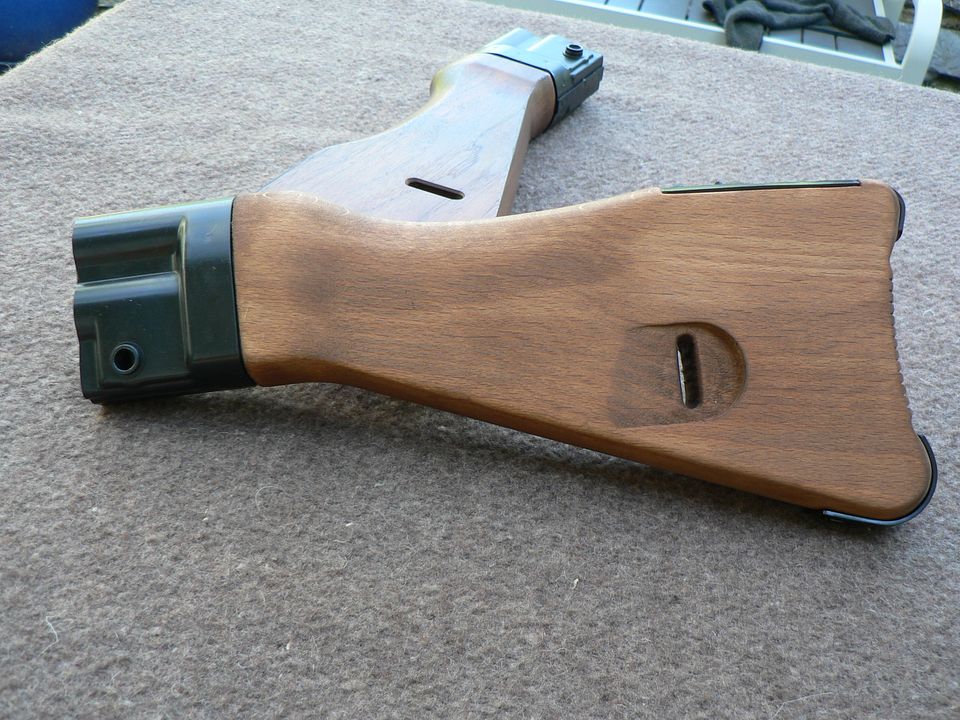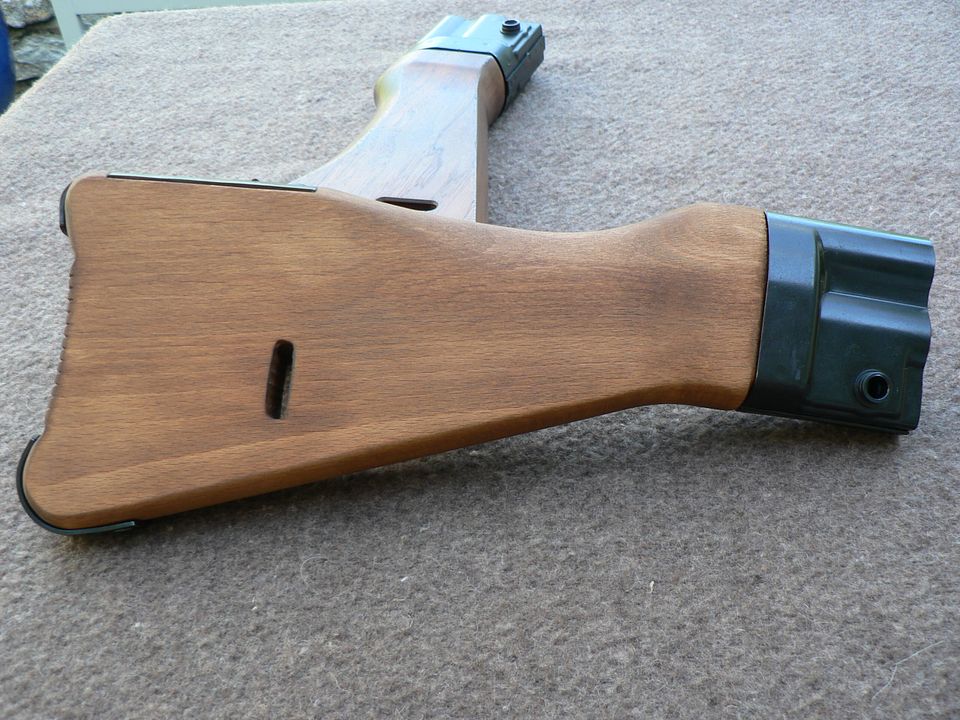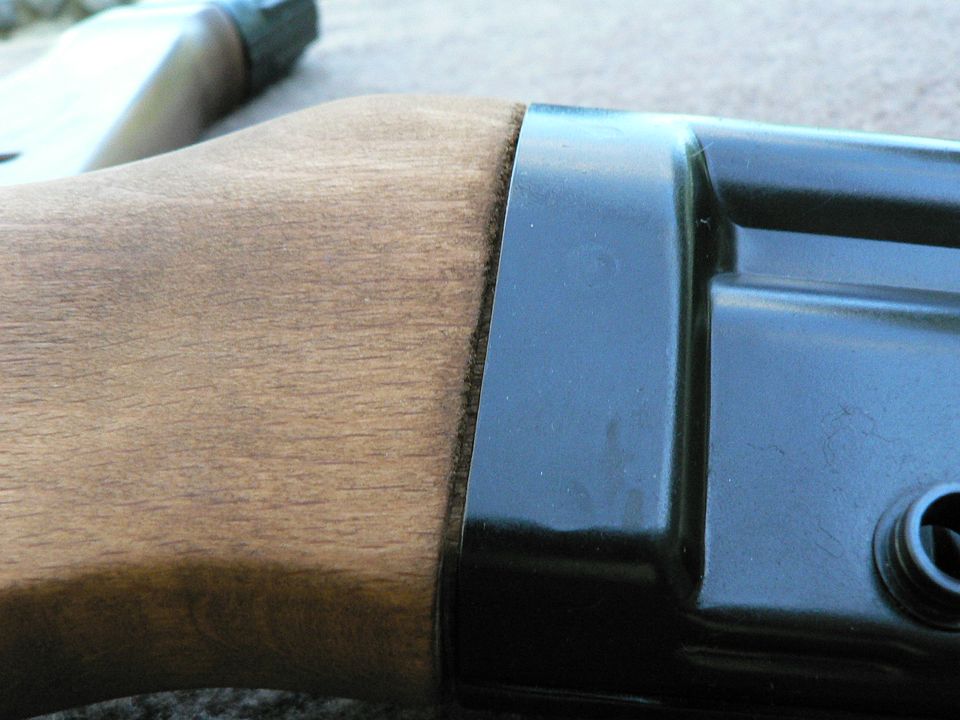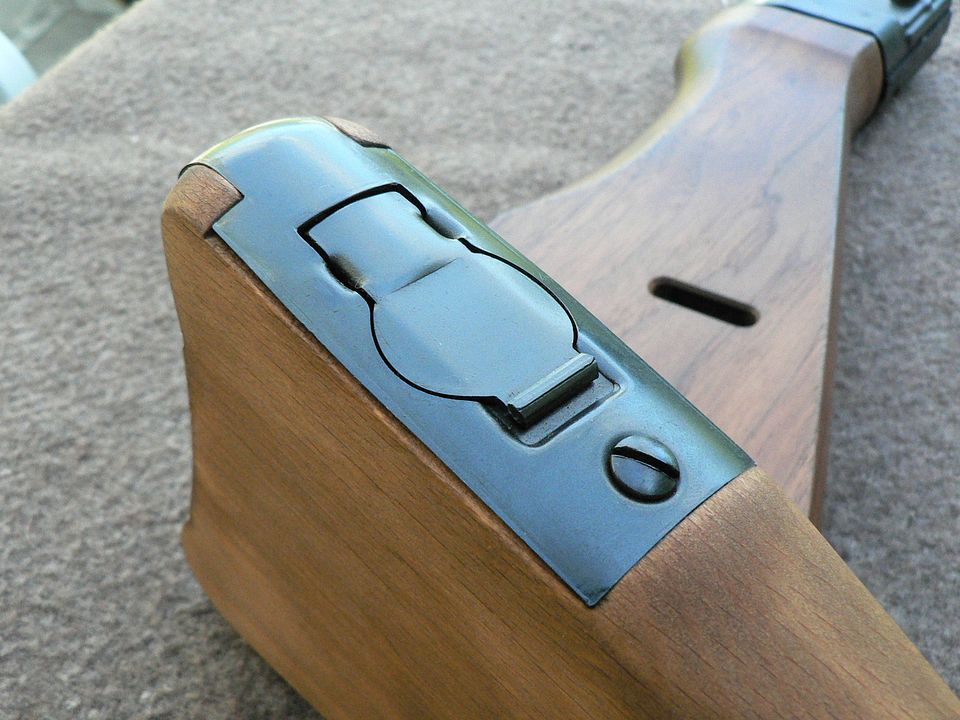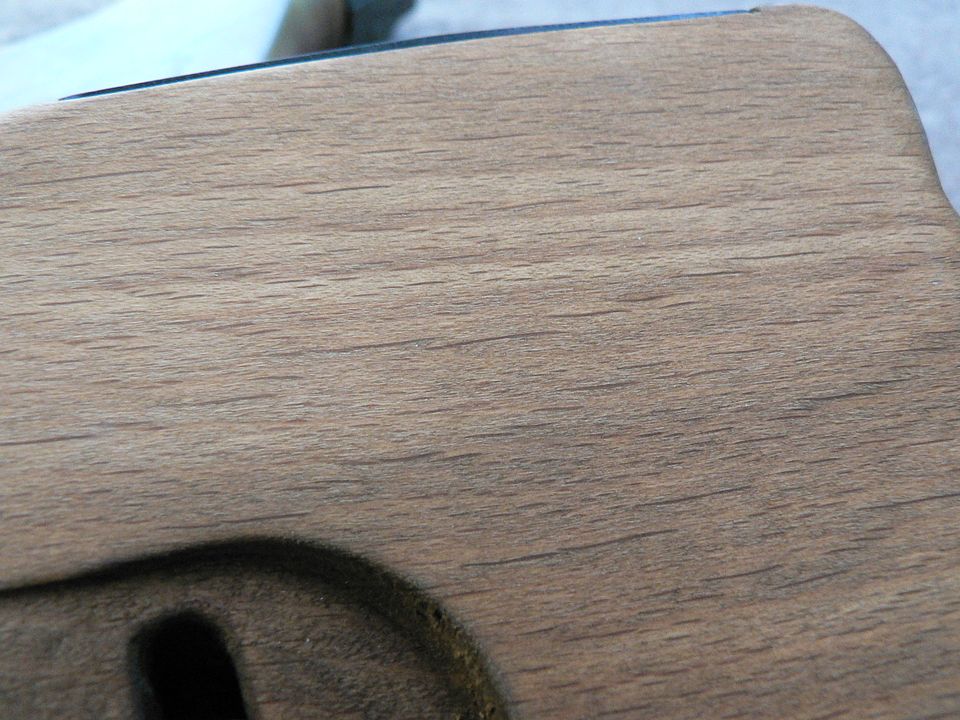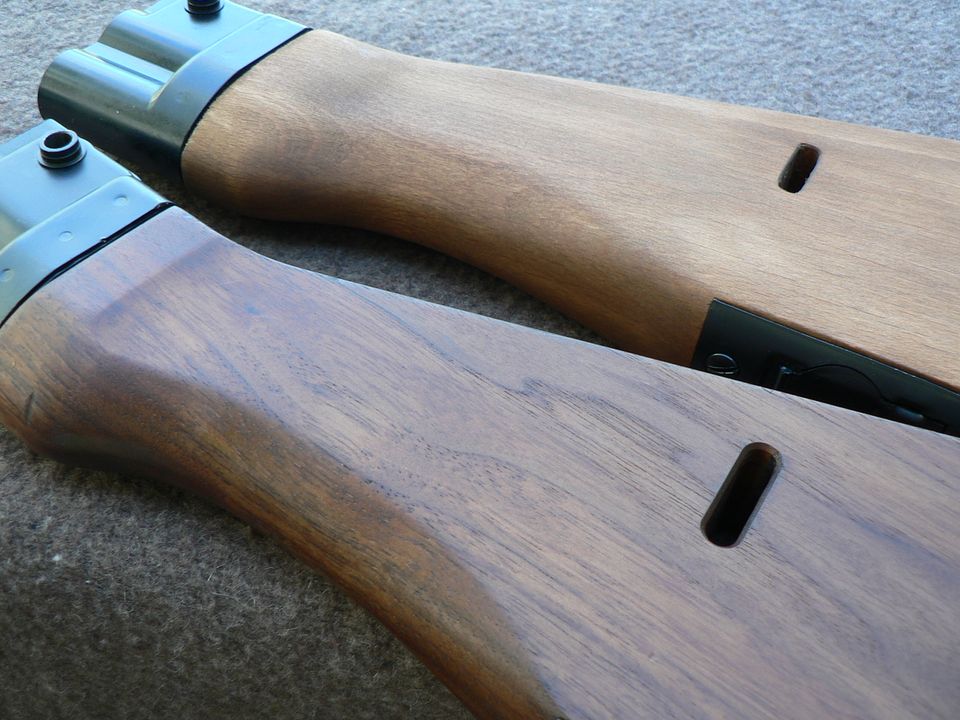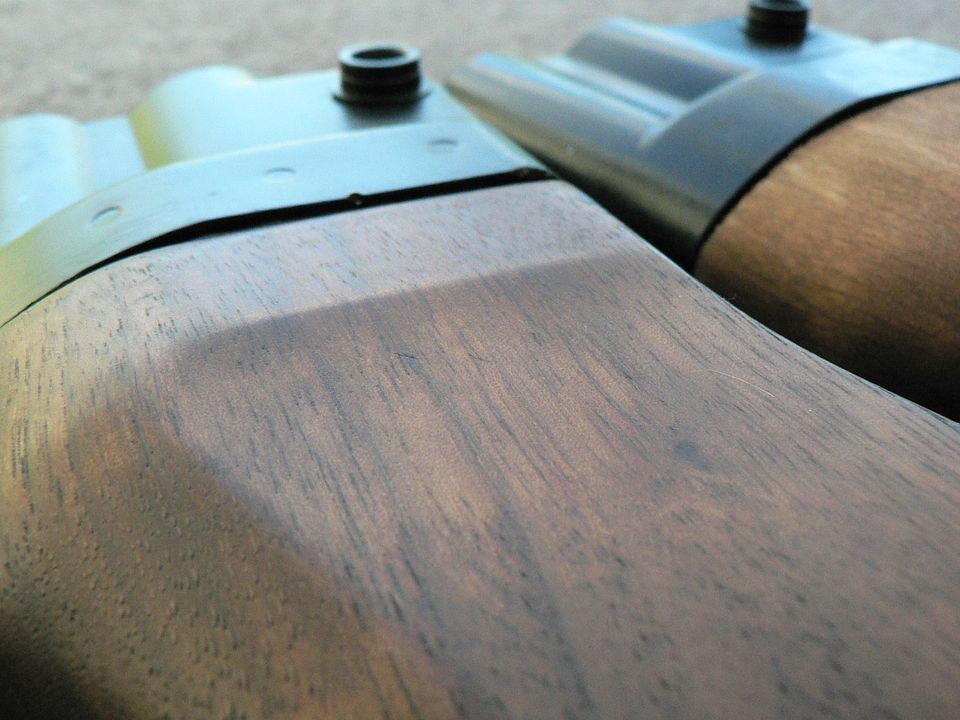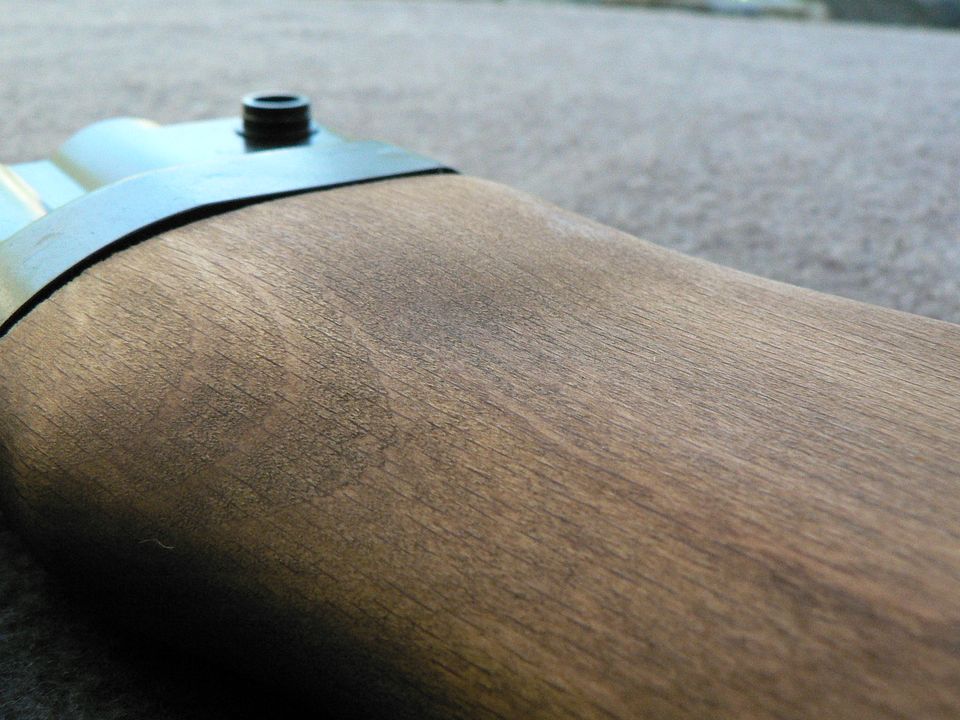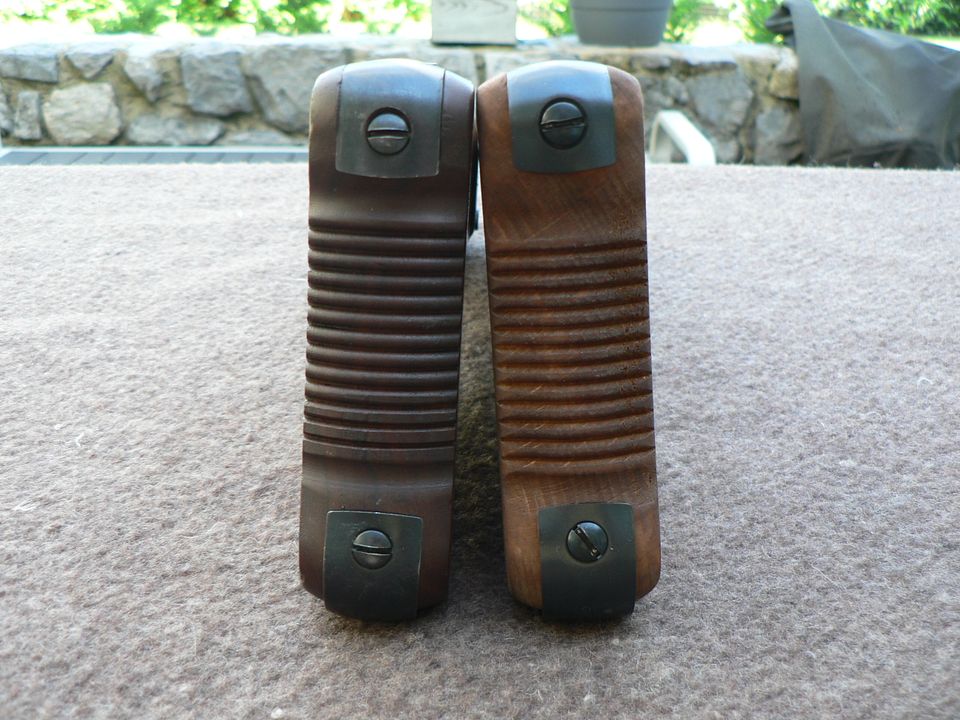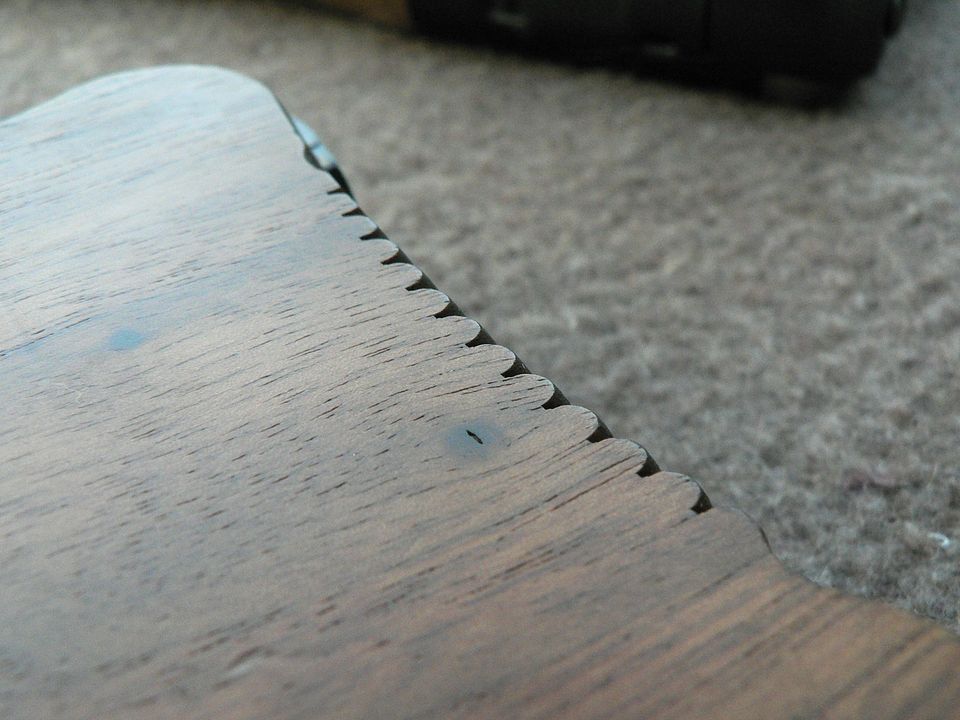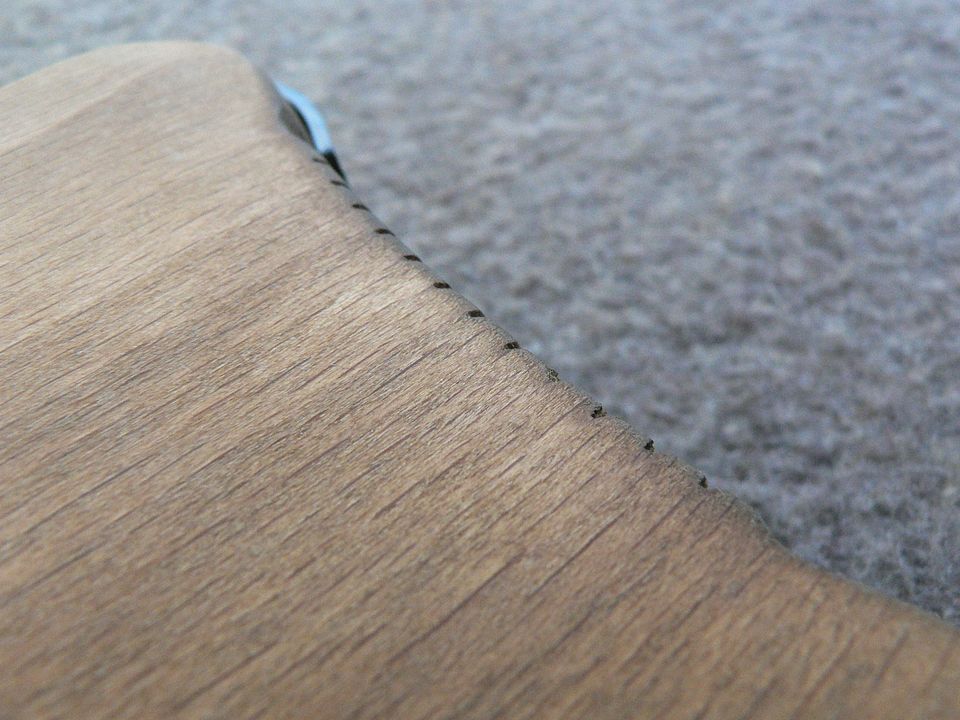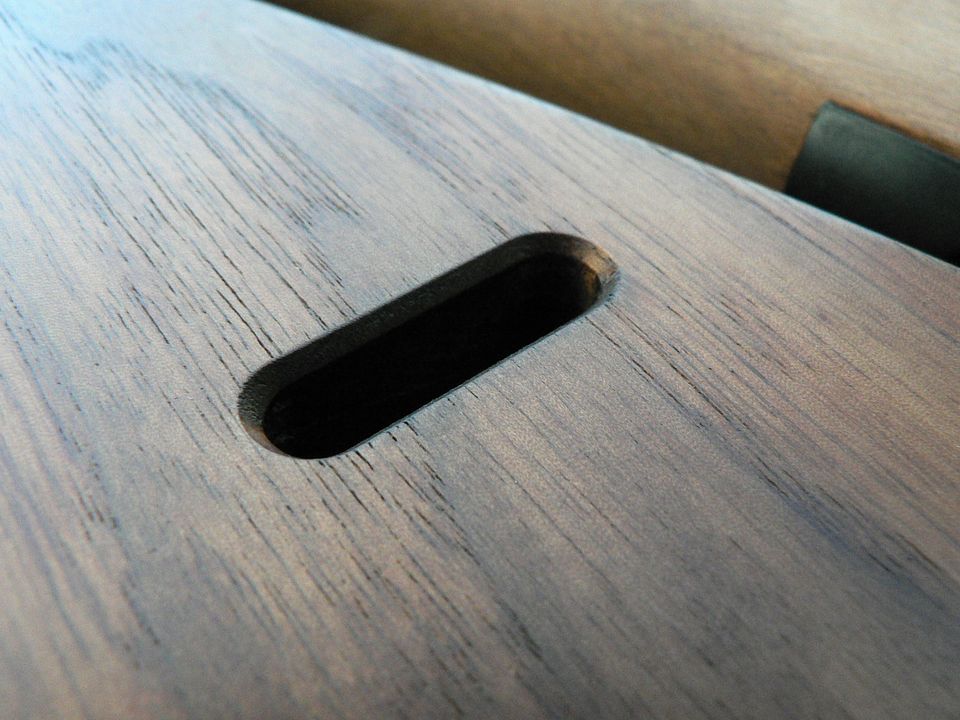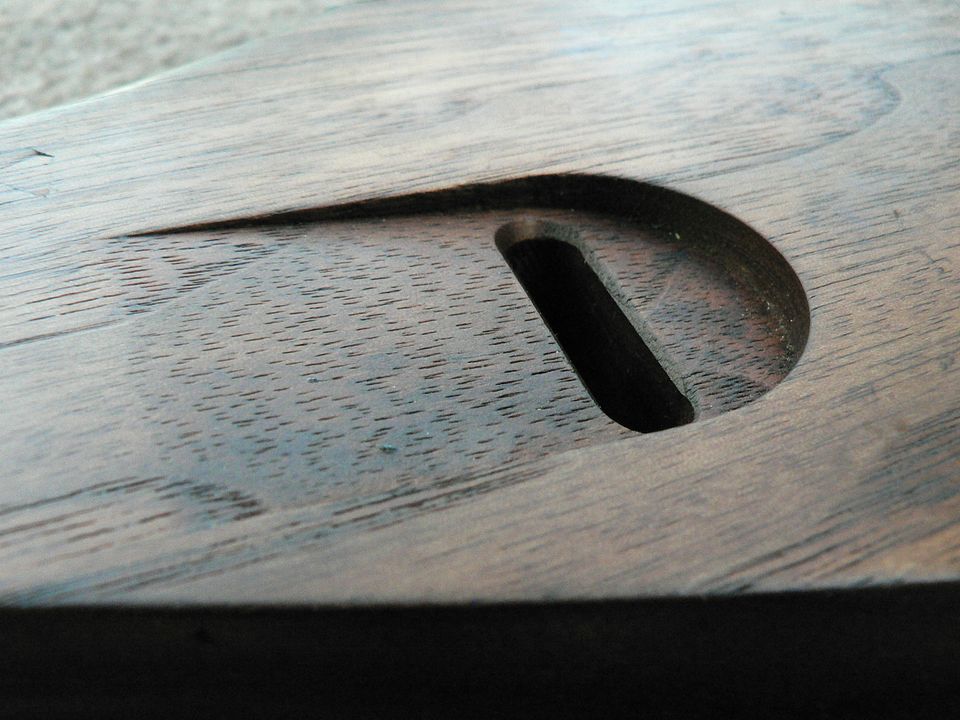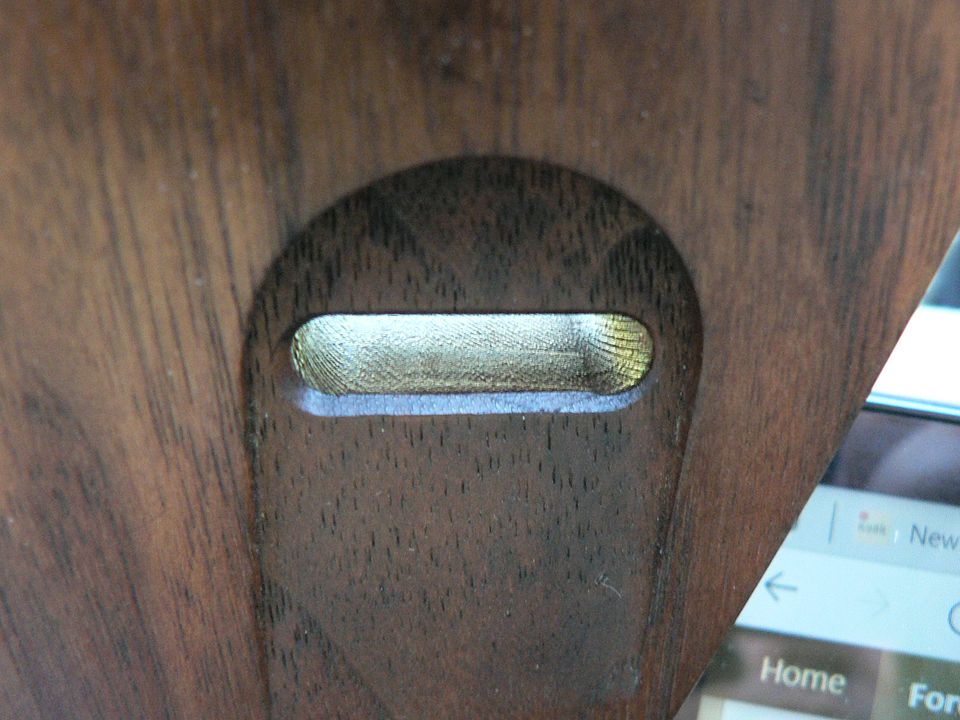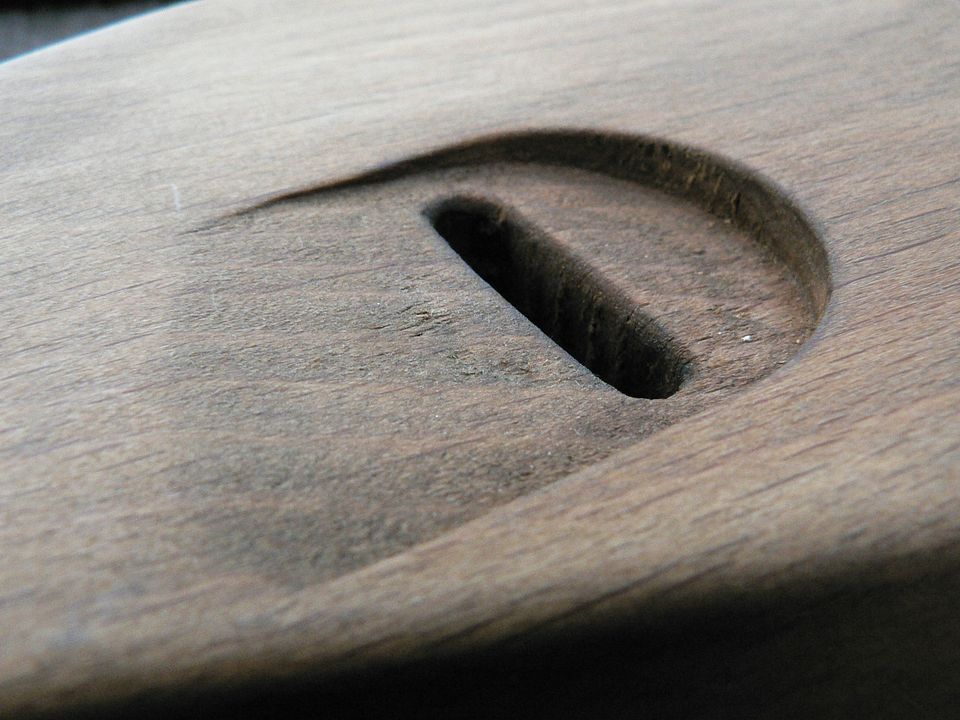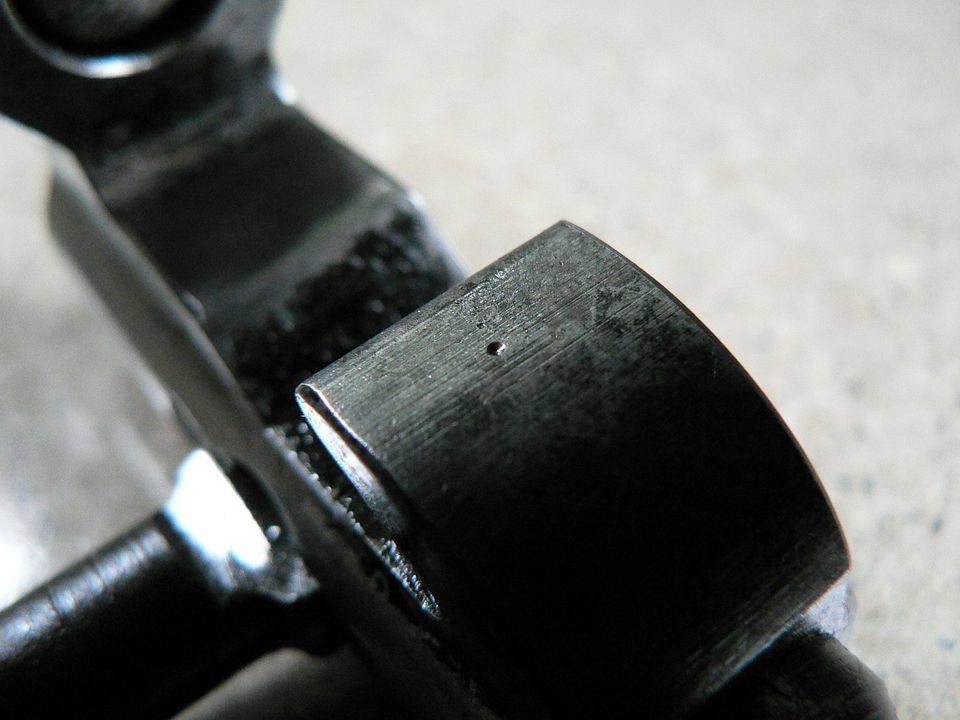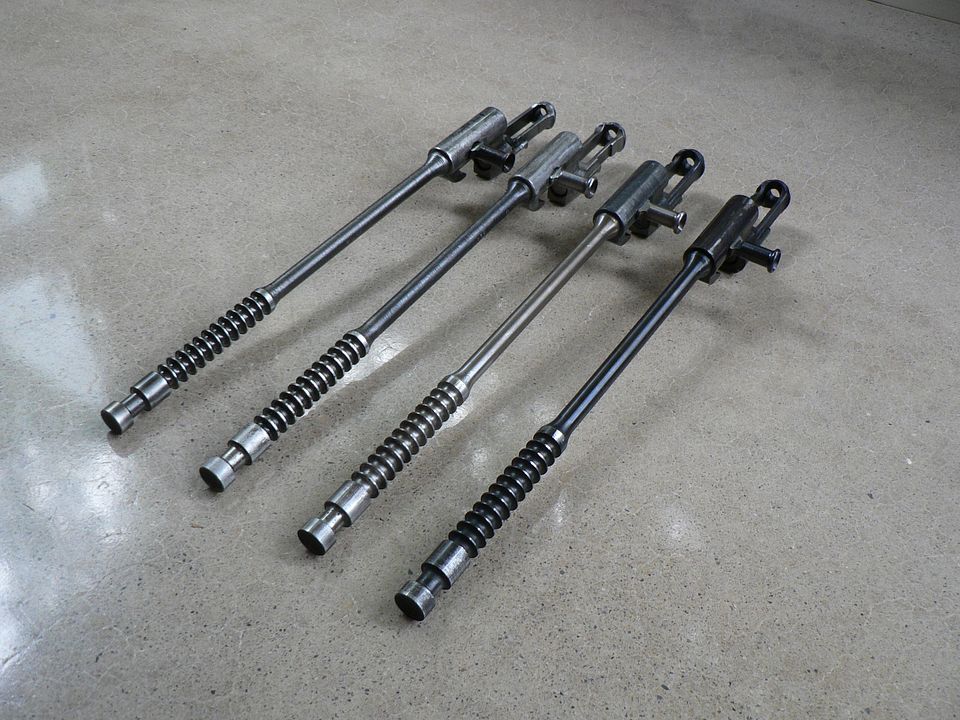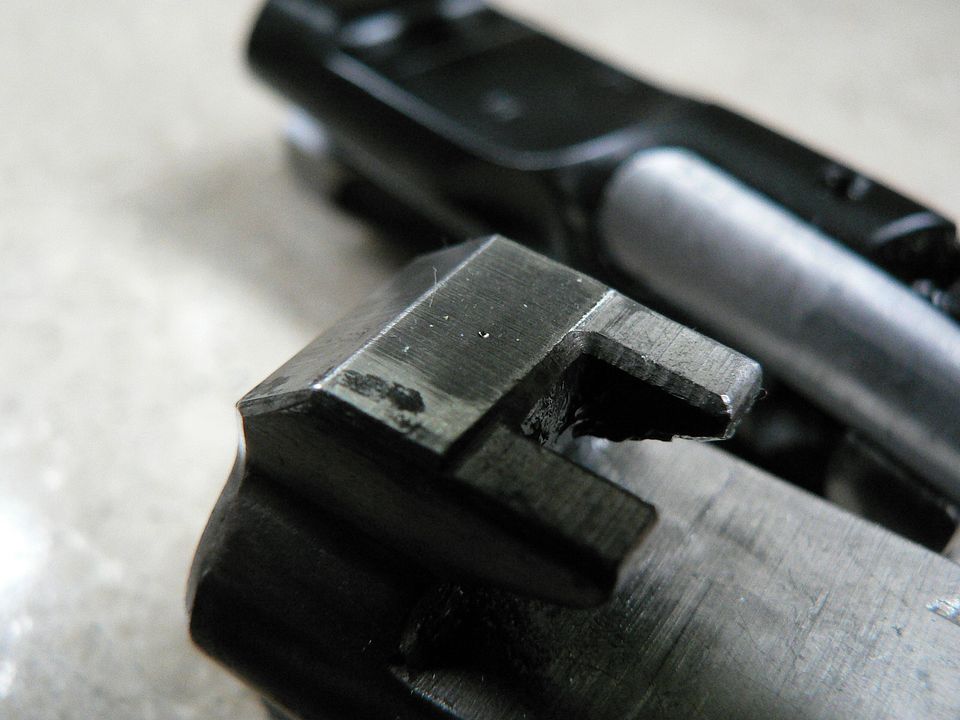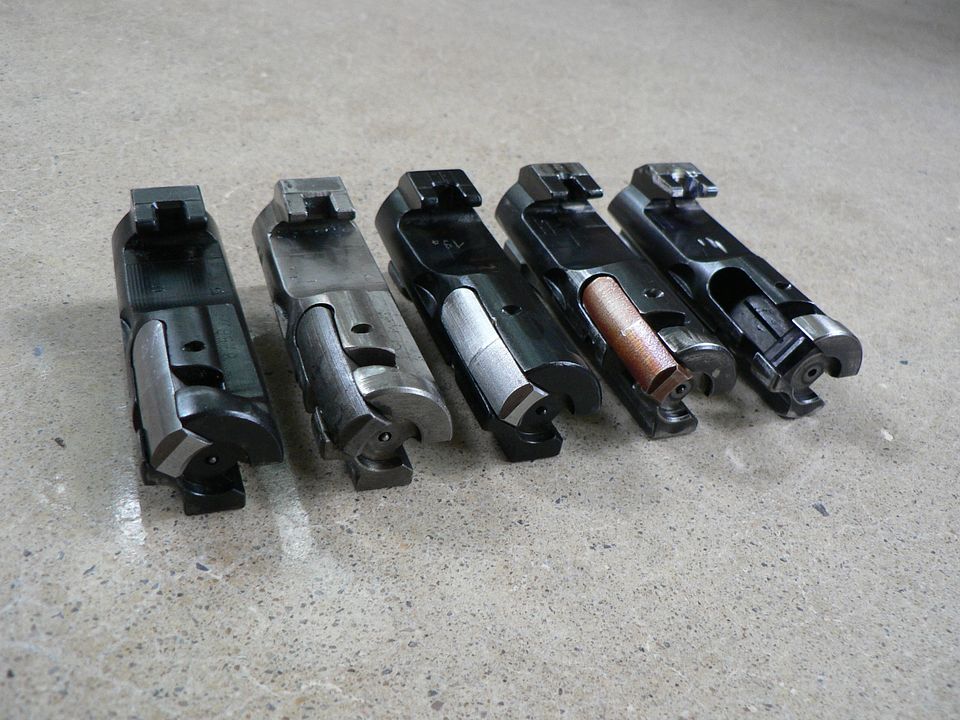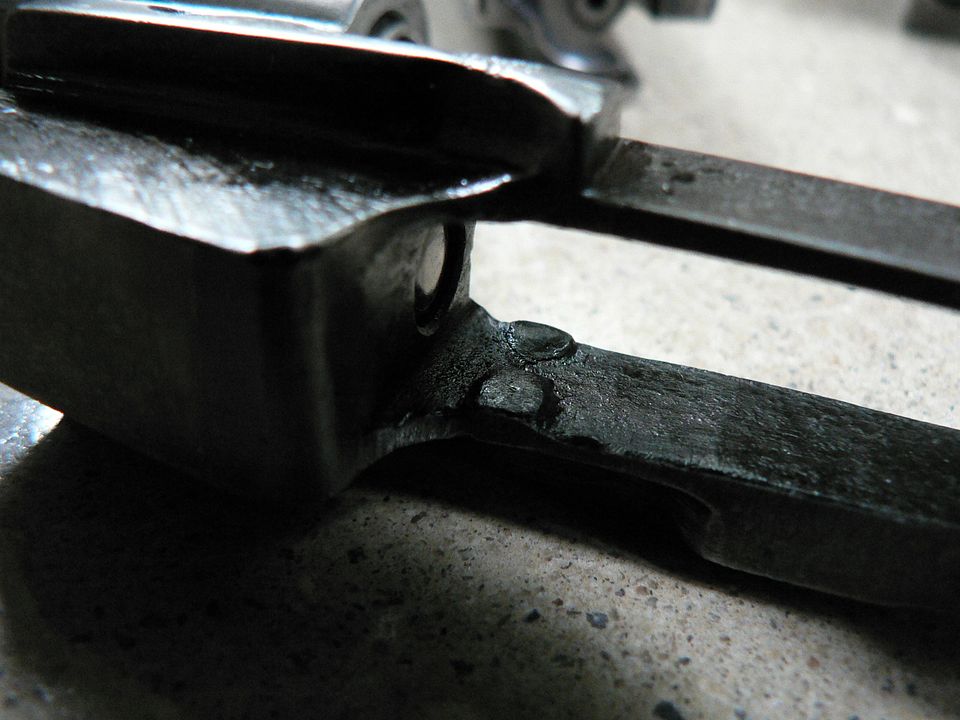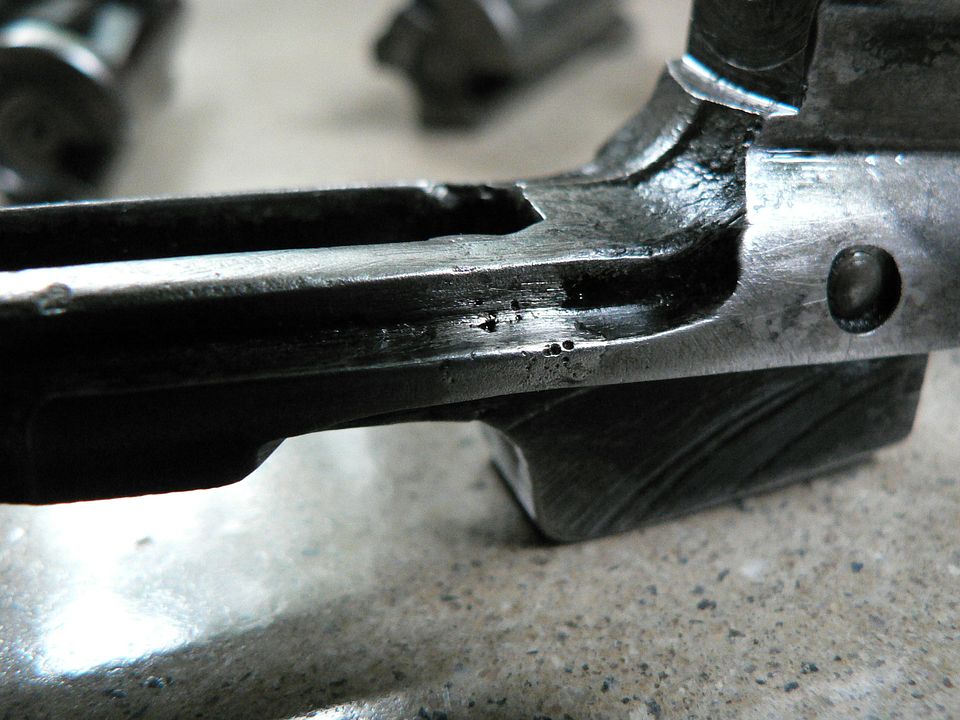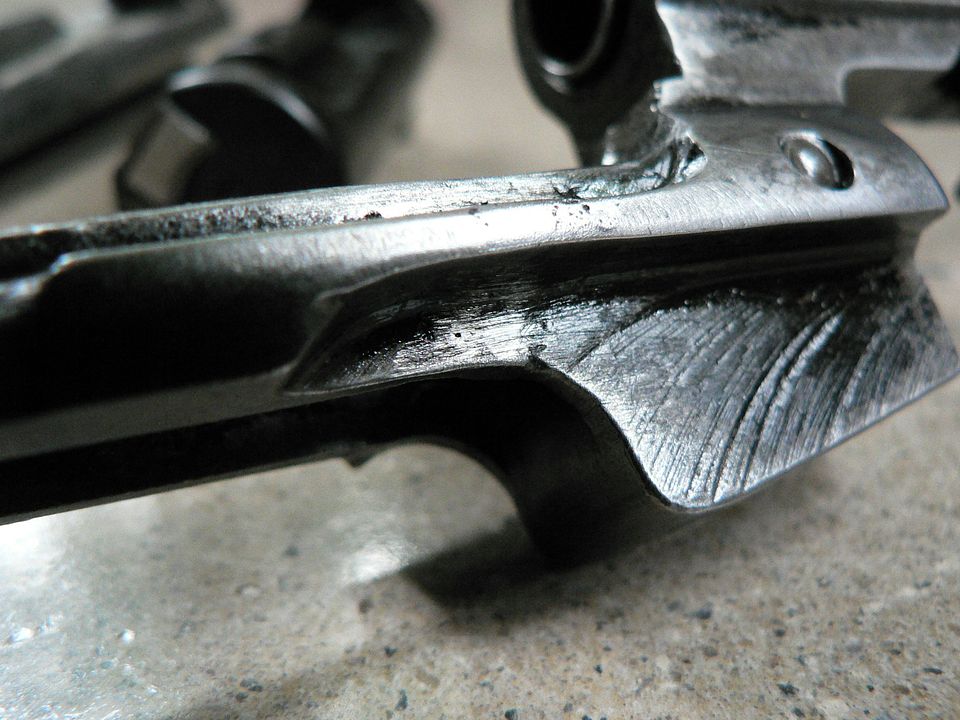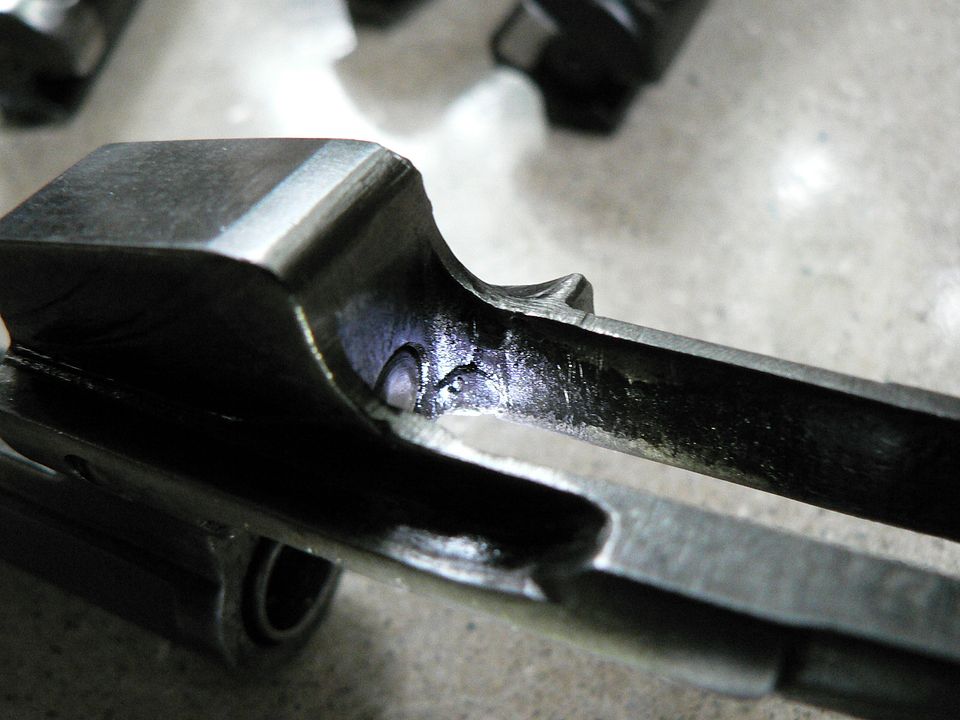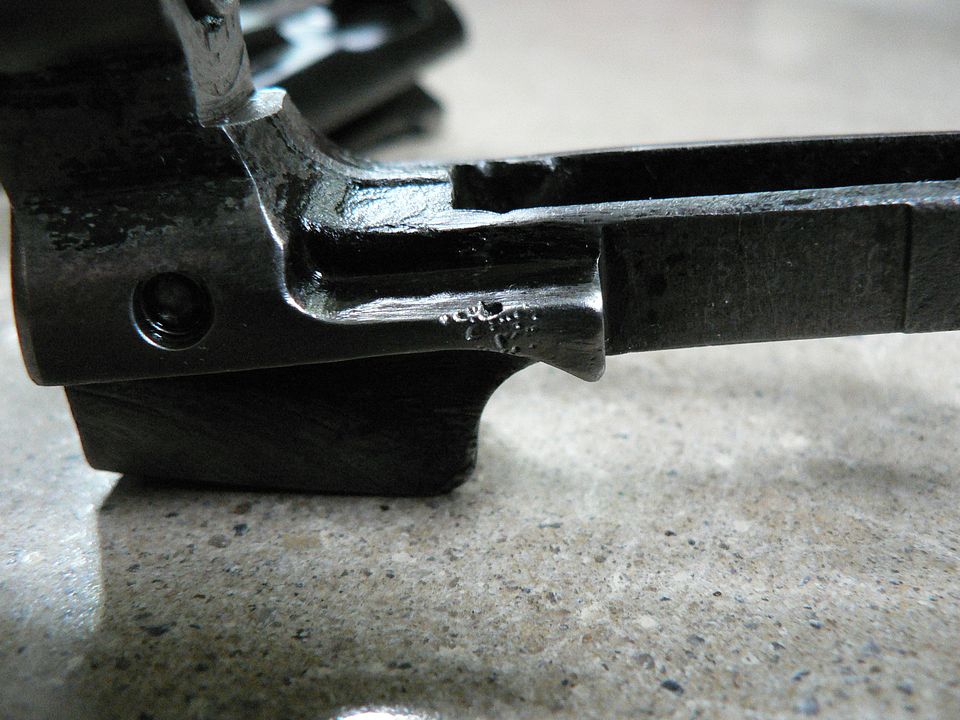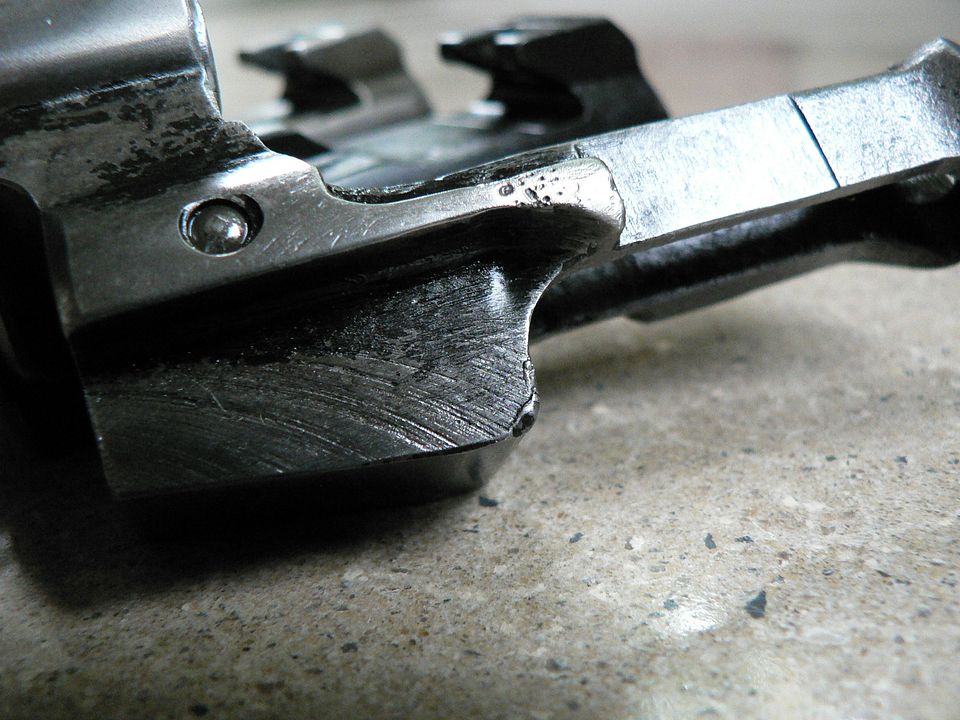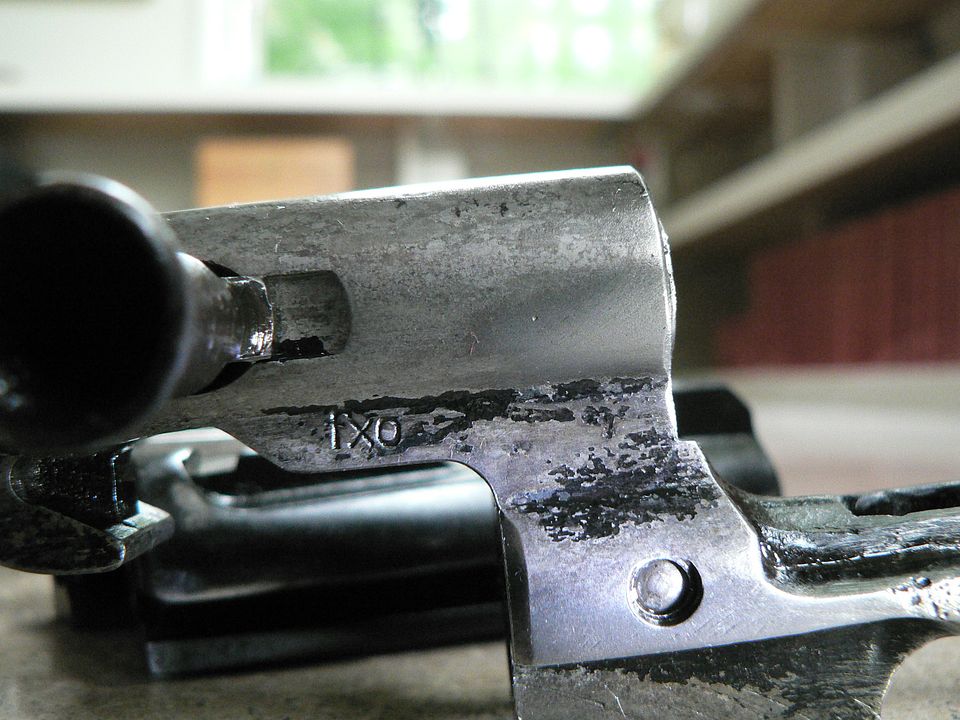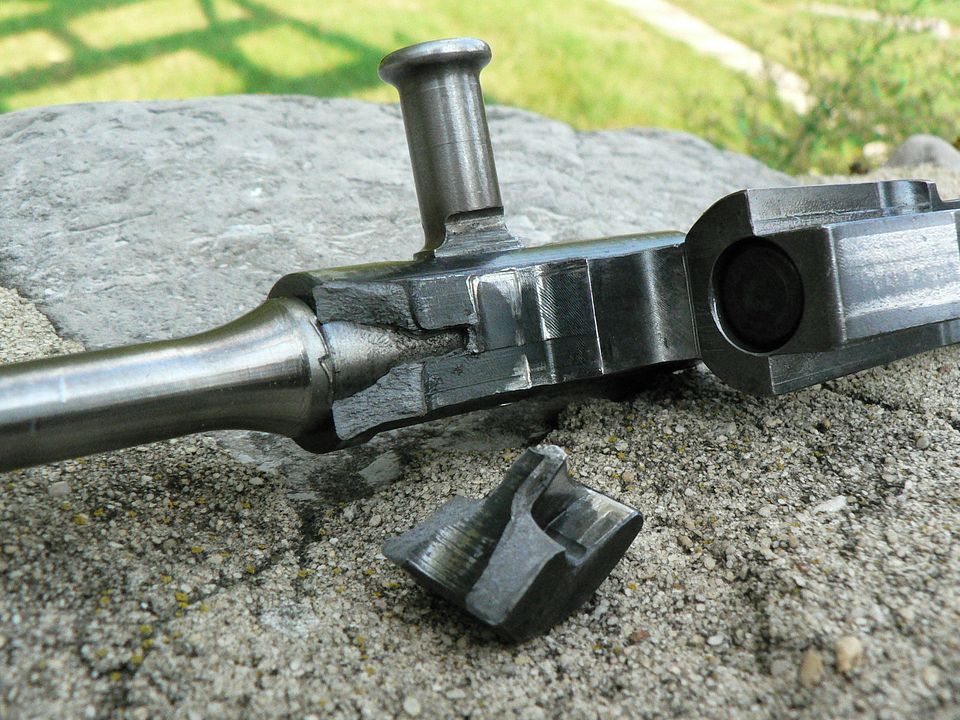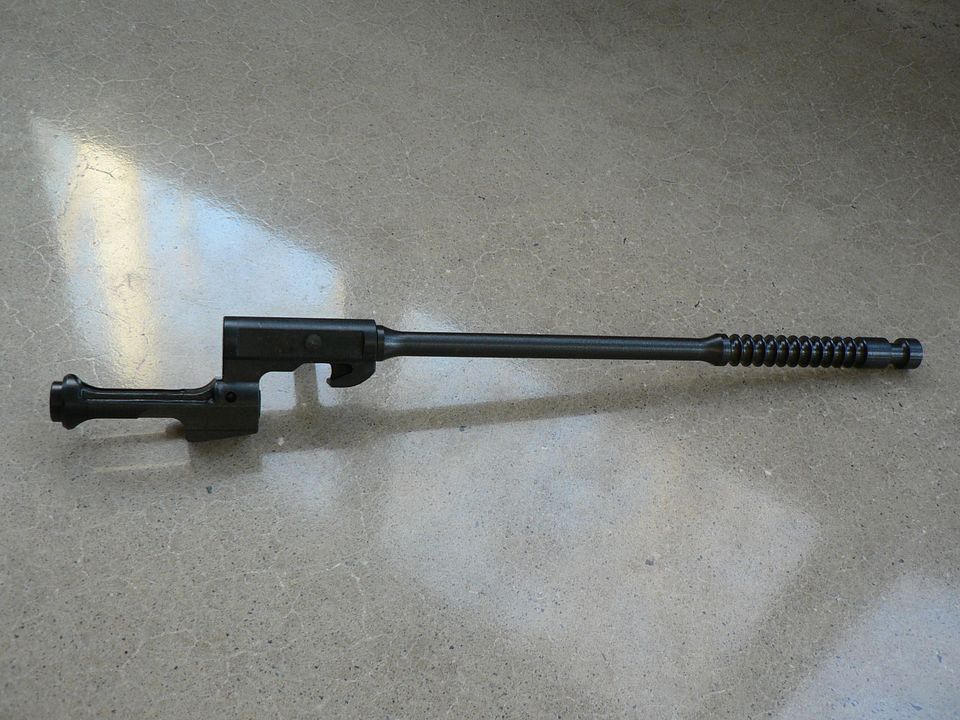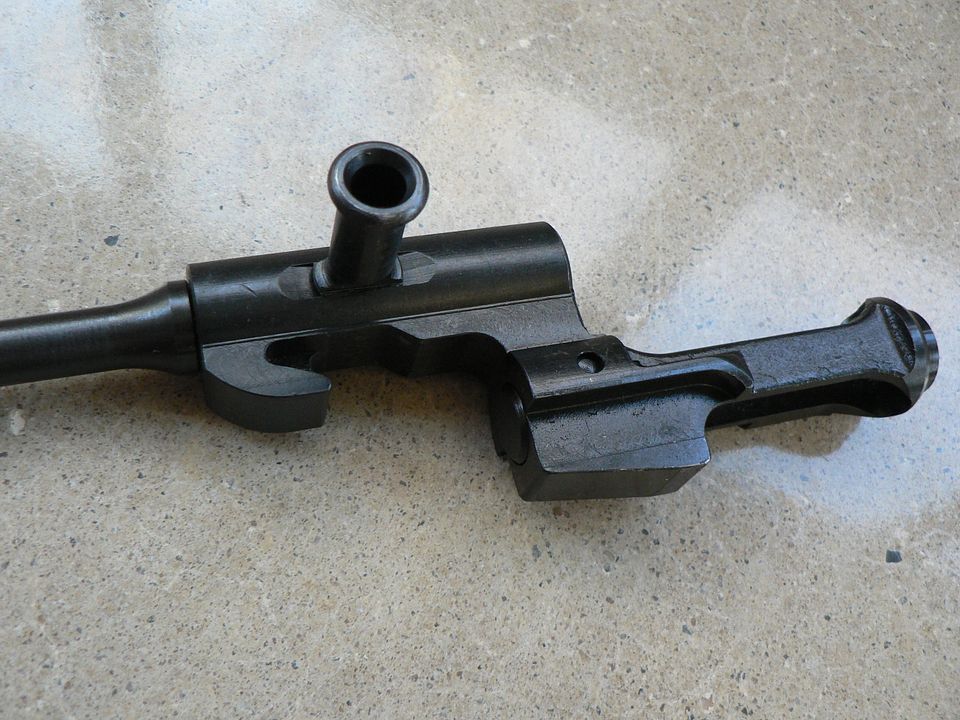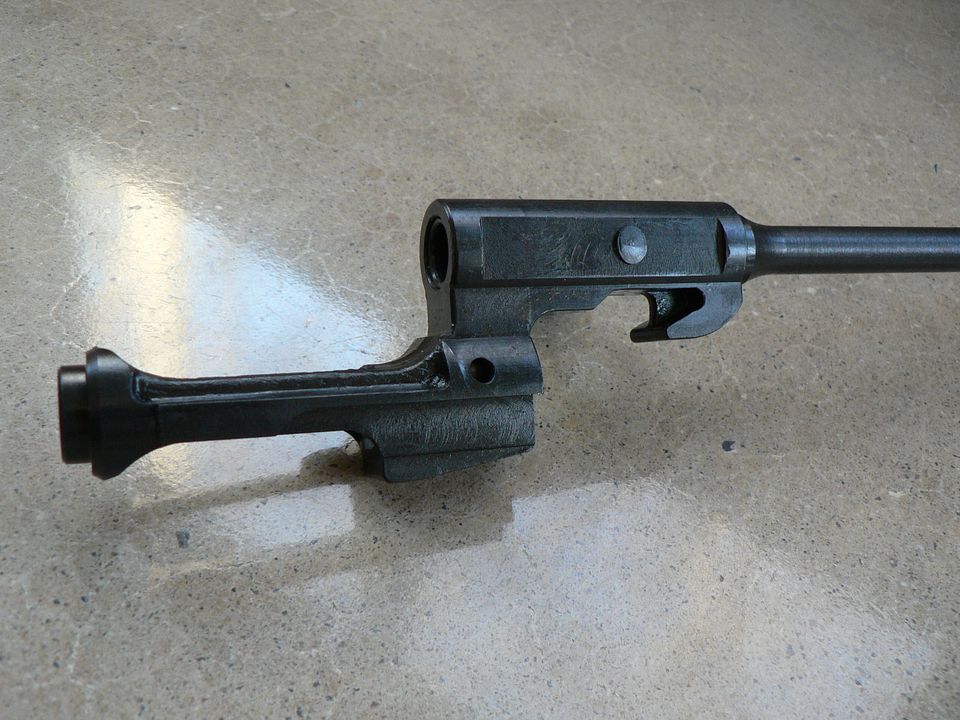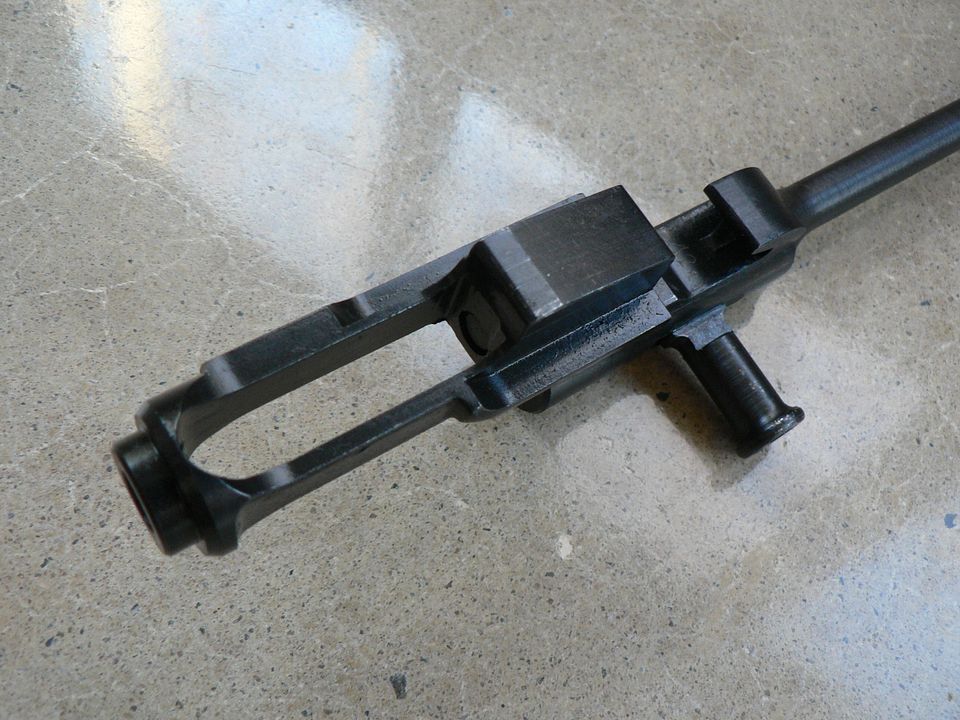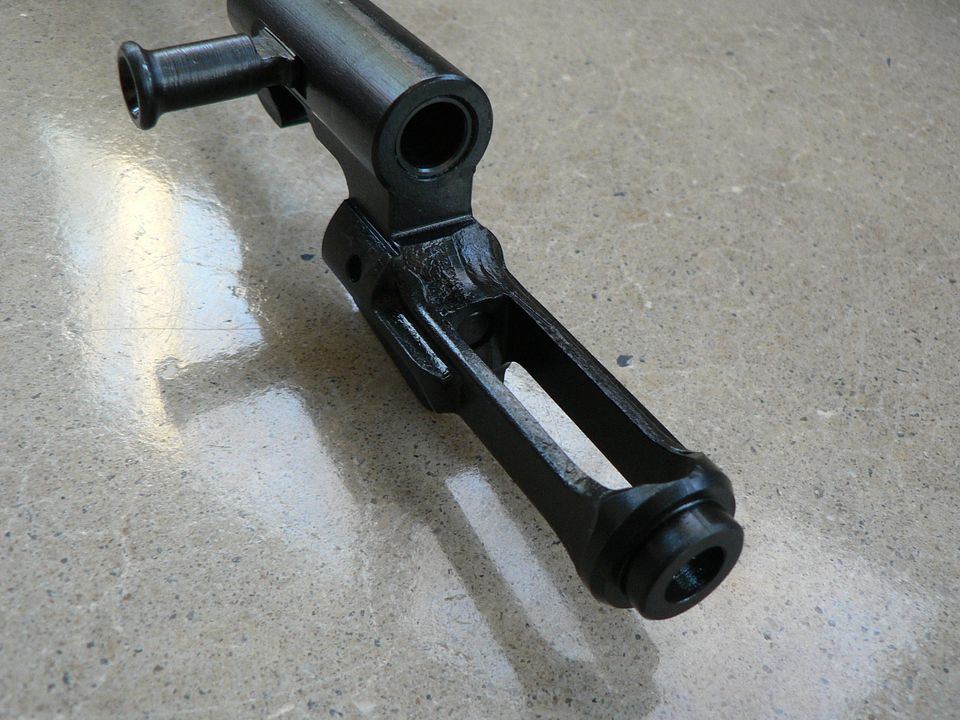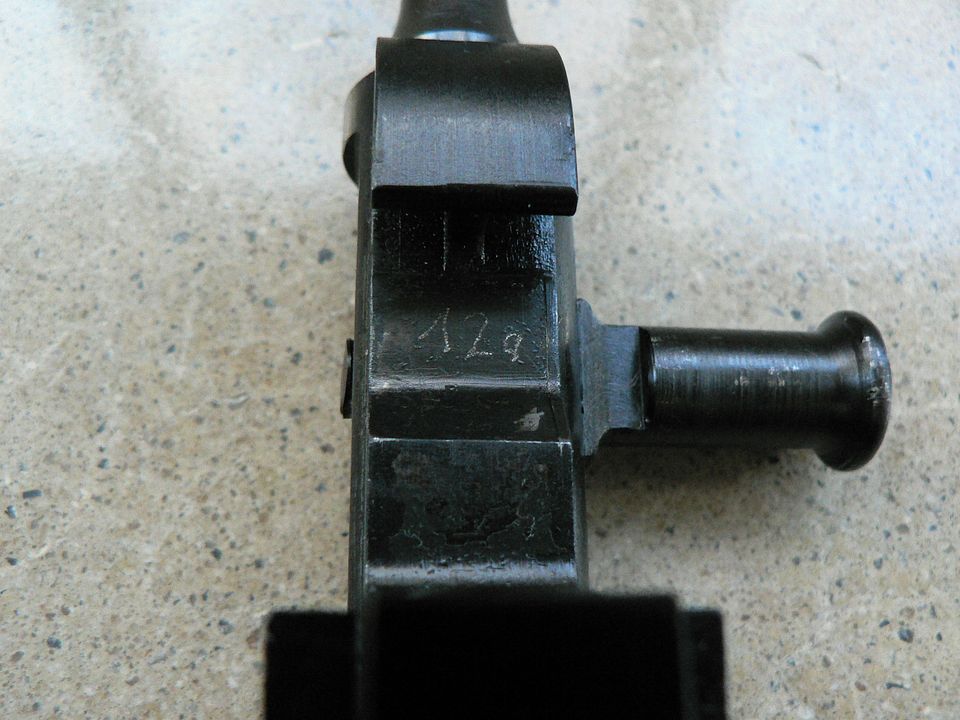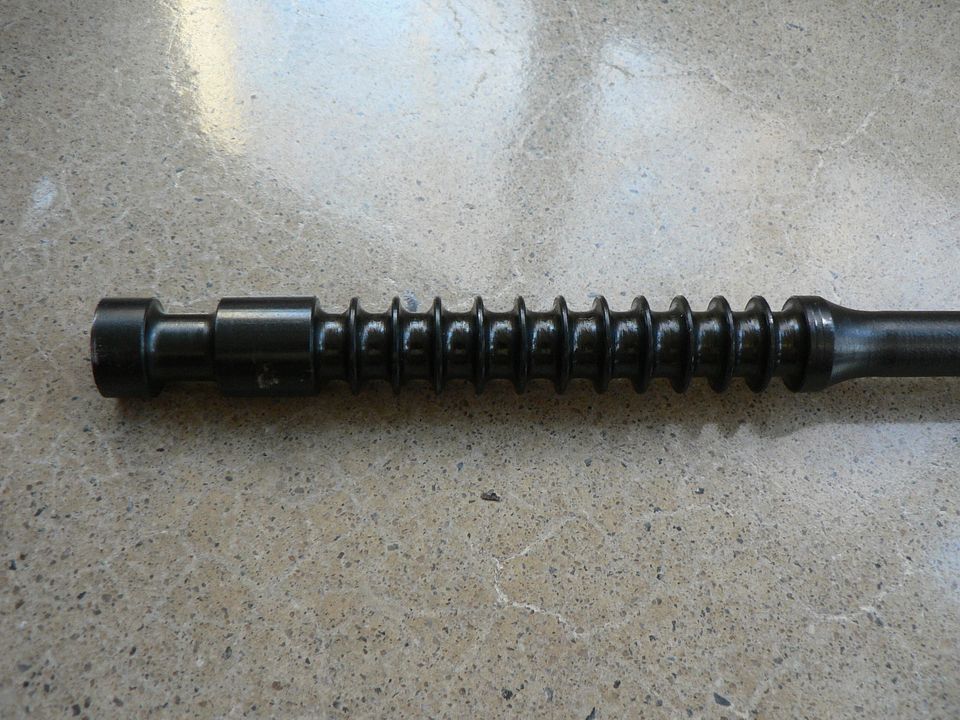As stated in my previous post, I'm getting older and my days of shooting at any distance with iron sights are in the rear view mirror. I can still shoot steel plates at 100M but I do so by not wearing my glasses and aiming at the center of the blob. I can get a hit but I can't shoot for accuracy. So, optics are now a must for me if I want to do more than just giggle at hearing the muzzle blast.
When the MP44 was being developed, some rifles had a scope rail spot welded to the receiver so that the same mount used on the G/K43 rifle could be fitted. Trials with an optic were less than satisfactory so the idea was dropped and the rifle entered mass production sans a rail. However, some rifles with a rail were encountered in the field and it is known that the ZG 1229 Vampir NV sight was fitted to the MP44 so clearly a limited number must have been produced other than for trials. The fact is, we'll most likely never know production numbers but it was most certainly vanishingly small. Whatever the case, SSD decided to reproduce the rail and install it on their rifles. I'm glad they did too because it means I can fit an optic on mine and continue to enjoy it as I get older. Unfortunately, there are two problems, price and dimensions.
First up is price. An original scope and mount is expensive. I used to have one when I had a G43. Man, was that thing accurate. I had enjoyed it for about 500 rounds when I had a pierced primer. The rifle was unharmed but the incident really brought home the fact that the G43 is very fragile and prone to breakage. I was afraid of destroying it if I continued to shoot it so I separated the scope rig from the rifle and sold them separately. Other than the rubber eye cup, the scope rig was 100% original parts and included the scope (a crystal clear Voigtlander), mount (Walther), bands with screws and windage knob cover. I sold it for $3000. Now, I have no interest in tying up that kind of geedus to use on a rifle that is a reproduction to start with. What to do?
An alternative is to use reproduction parts to build a scope rig. The optic is not the problem. Several years ago, Meopta in the Czech Republic, who made the ZF4 during the war under the name Opticotechna GmbH, broke out their old machinery and made a bunch of them for the reenactor market. They are of excellent Quality and can be had for around $500. I have on mounted on my FG42 and it's a thing of beauty, robust and reliable. Additionally, the eye cup, windage knob and sunshade are available as well made reproductions too. They are close enough to look the part but just different enough that they can't be passed off as original if you know what to look for. The Meopta scope is likewise made slightly different. The mechanics are identical but the markings are slightly different and the lenses are coated, something that was not done during the war. The problem is the mount and rings. A very few reproductions are properly made but the vast majority are essentially junk. That's a rabbit hole I'd rather no go down. But there is another alternative........
At the end of the war, the Czechs found themselves with a massive amount of German equipment left lying around. Additionally, during the war, Czechoslovakia had been a major manufacturing area for the German military. So, for a while, the Czechs used German equipment. They even went so far as to employ the ME262 jet fighter in their airforce! But that's way off topic. What's on topic is that Czech army used the G43 rifle as a marksman's rifle for a time. Not only did they use left over ZF4 scopes, but they also refurbished some and even made new ones marked as a "Vz43" (Model 43). Similarly, they used left over mounts and, because they made mounts during the war, they continued making news ones with Czech markings. This is the ticket if you want the best Quality rig for range use. All components are made to original specifications because they are made by an original manufacturer. And because they are Czech marked, they lack the monetary value associated with German marked components which means you can save a PILE of cash. The problem is locating them. Even though they aren't worth much, they are far rarer than wartime produced equivalents. The only way is through patience, persistence, and most important of all, luck.
This past January I got very lucky. I stumbled across a Czech rig that had not been messed with. The refurbished ZF4 was cloudy and the turrets were frozen but the CZ made mount was pristine and the bands with screws were original. I paid $450.
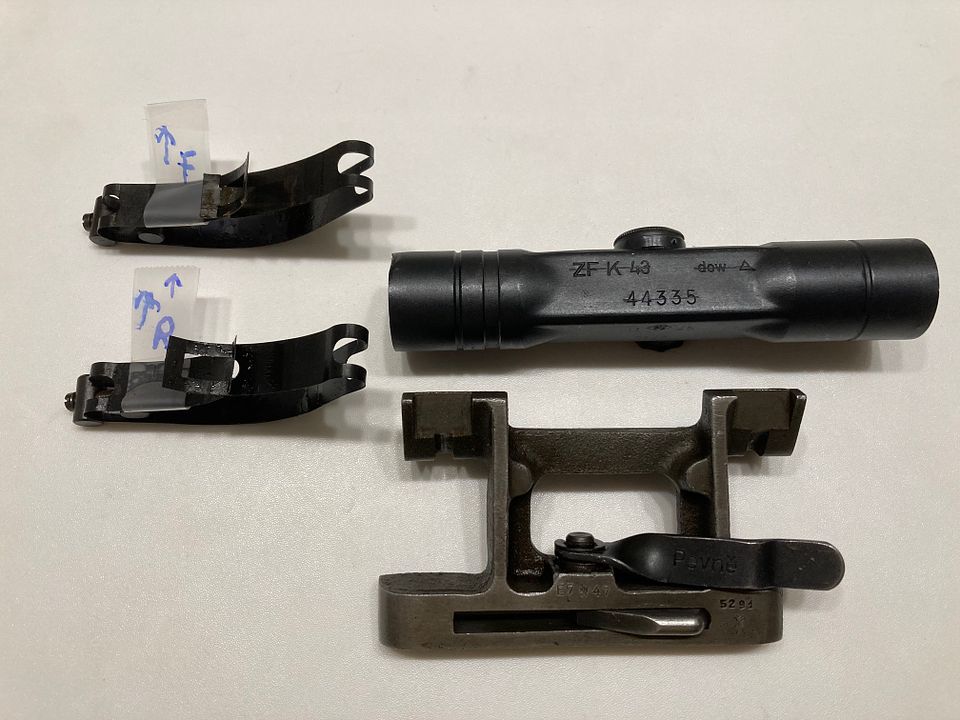
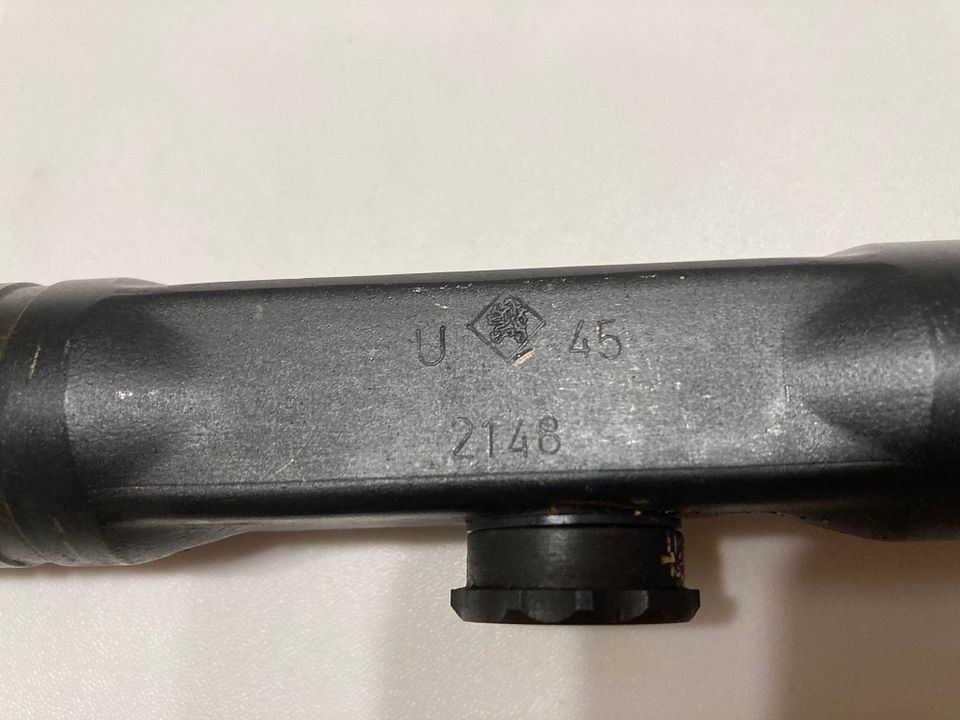
I received it assembled but I disassembled it to inspect everything and get the scope sent off for refurbishment by Don Miller of Optihaus who is considered to be the best man for the job on this continent. In the first picture, you can see the lined out markings. The scope was made in Czechoslovakia during the war by Opticotechna. "ZF K 43" marking tells us it's a later war production unit. During rework after the war, all of the original markings were struck through and new markings applied on the bottom of the body (2nd picture) As such, they cannot be seen when the optic is installed on the mount. We can see the Czech "rampant lion" acceptance proof, a new serial number and the "U45" refurbishment marking telling us it was rebuilt in 1945.
I sent the scope off to Don in late February excited about having it back in time for some nice warm weather zeroing so I could do some long range testing. Well, things don't always go according to plan. Don is a busy man and he works on scopes at his pace when he has time to do so. Long story short, I didn't get my scope back until October 19th but it was well worth the wait. It's now crystal clear and the once frozen turrets now work perfectly. He even threw in a reproduction eye cup and windage knob cover and he only charged me $150 for the service. I sent him a Check for $200 and would have happily paid more. I'd recommend him for ZF4 work to anyone so long as they are patient. His email address is
optikhaus@yahoo.com
So, I have a grand total of $650 wrapped up in the scope and mount and another $60 for a sunshield from Darrin Weaver at Historicalparts.com. A comparable wartime rig would be well over $3000 and it wouldn't be of any better quality. For my purposes (range use) that's one hell of a savings. That takes care of the price problem. Earlier I said there is a dimension problem too but we'll cover that as we look at the pictures of the end result.
First up, here are general left and right side views of the scope rig mounted on the rifle:

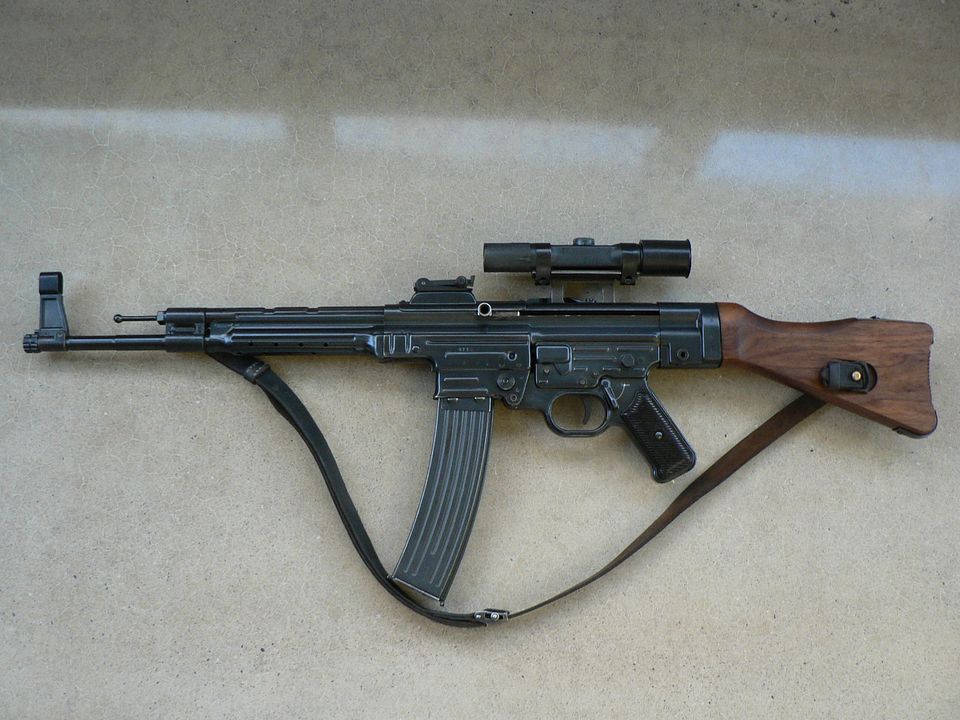
I really like the pale phosphate finish on the mount. It's so thin it looks almost like a wash that you can still see the bare steel through. It's identical to the German late war phosphate. Whatever the formula was, it seems to have been lost to time as I am unaware of anyone who can reproduce it today.
Markings at the rear of the mount:
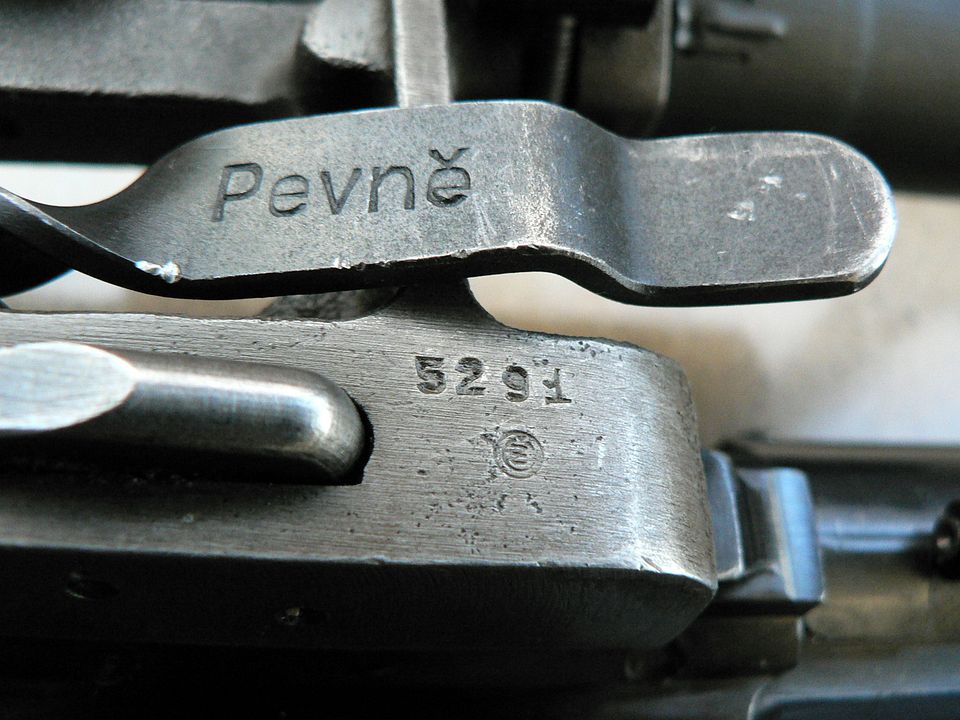
The lever is swung to the rear locked position showing the word "Pevne" or "fixed". Below that is the serial number. I don't know if this is the mount number, the scope number, or the rifle number. Below that is a CZ manufacturer mark. Some are marked "rid" which was the Czech ordnance code for CZ. I'm not aware of any other manufacturer of these for the Czech military.
Next are the markings on the middle of the mount:
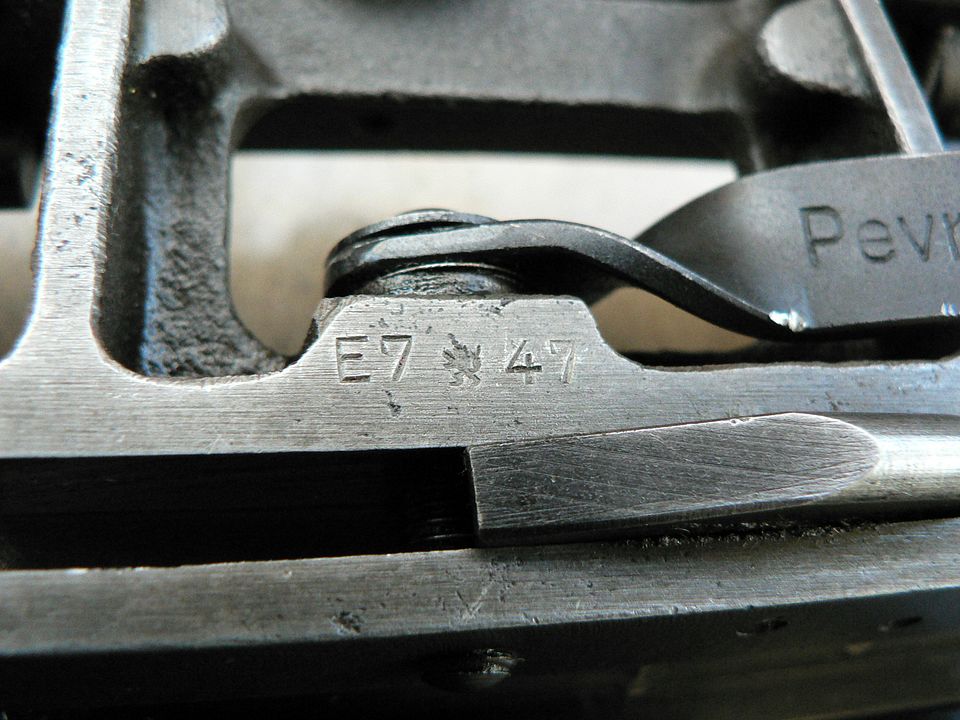
Again we see the rampant lion acceptance mark. I assume "E7" is a quality control stamp but I'm not sure. "47" is the year of manufacture.
When the locking lever is swung forward to the unlocked position, the word "Volne" or "Free" is displayed:
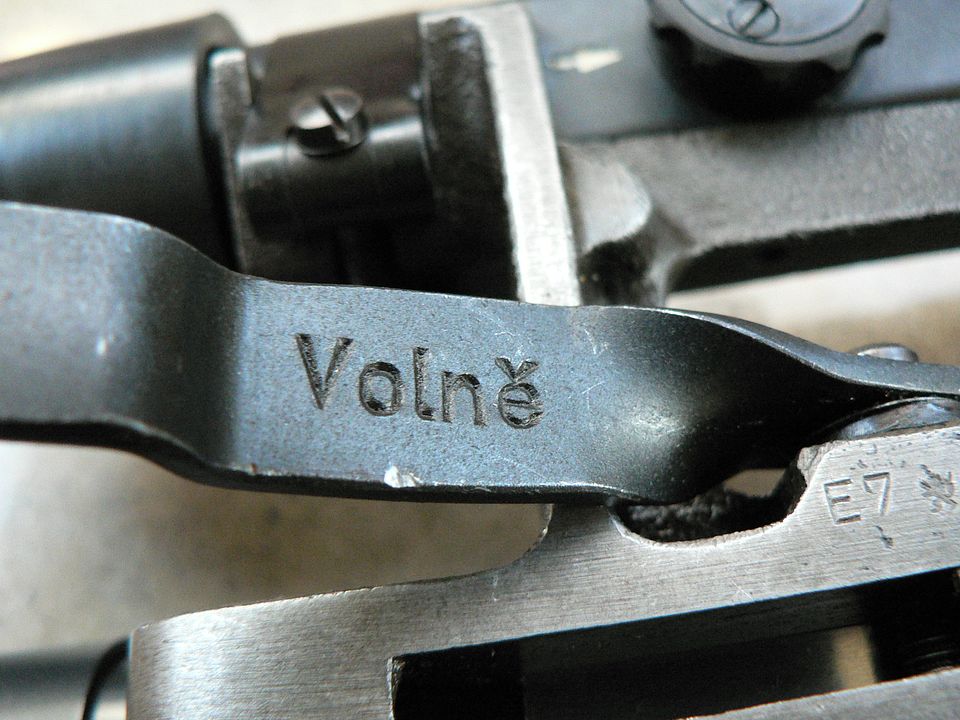
During refurbishment by the Czechs, coated lenses were used installed:
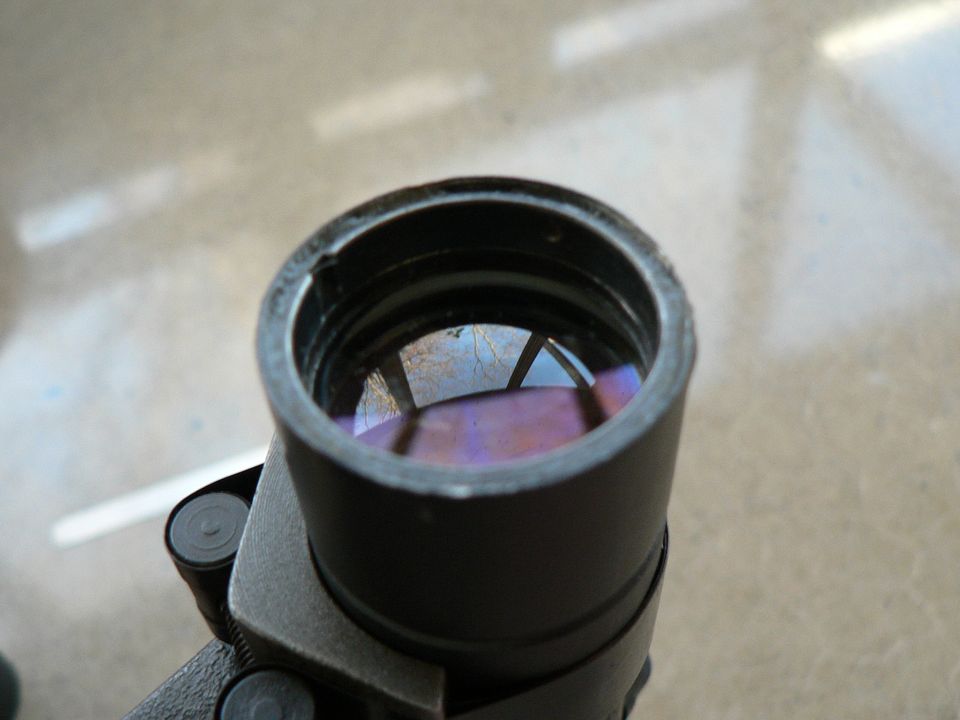
Scope assembled to the mount showing the bands and proper length screws. Reproduction screws are almost always too long:
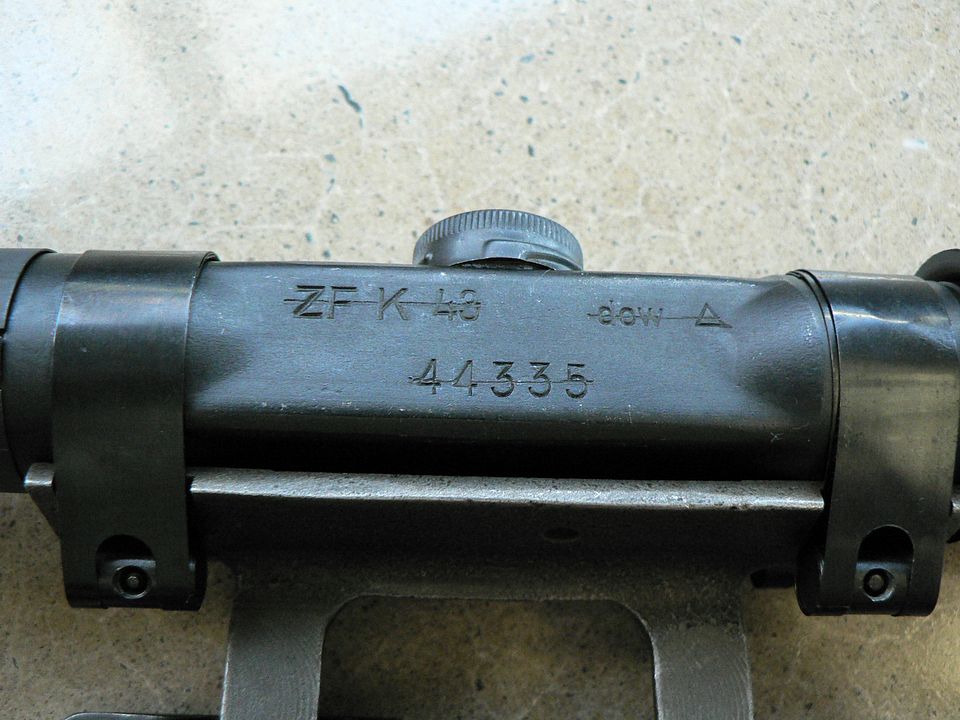
The windage cap is an almost perfect reproduction.
Now we come to the dimension problem. Here is the rail on the rifle:

It looks great, just like the rail you'd see on a G/K43 rifle. The problem is, it's not dimensioned correctly. I've only had the chance to try two original mounts on two PTR44 rifles. Both times, they would not lock down correctly and the mount would literally rock side to side on the rail, making it totally useless for anything other than display. Are all PTR44 rails out of spec? I don't know but I'd bet that they are. Fortunately, there IS a solution. what you need to do is fabricate a shim out of aluminum. In my case, I happened to have one lying around that came from Buddy Hinton. He had them made for use with the Model 1953 scope on the the MAS49 and 49/56 rifles. It turns out one of those shims works out just fine in this application and the scope mount now seems to lock down properly on the rail:
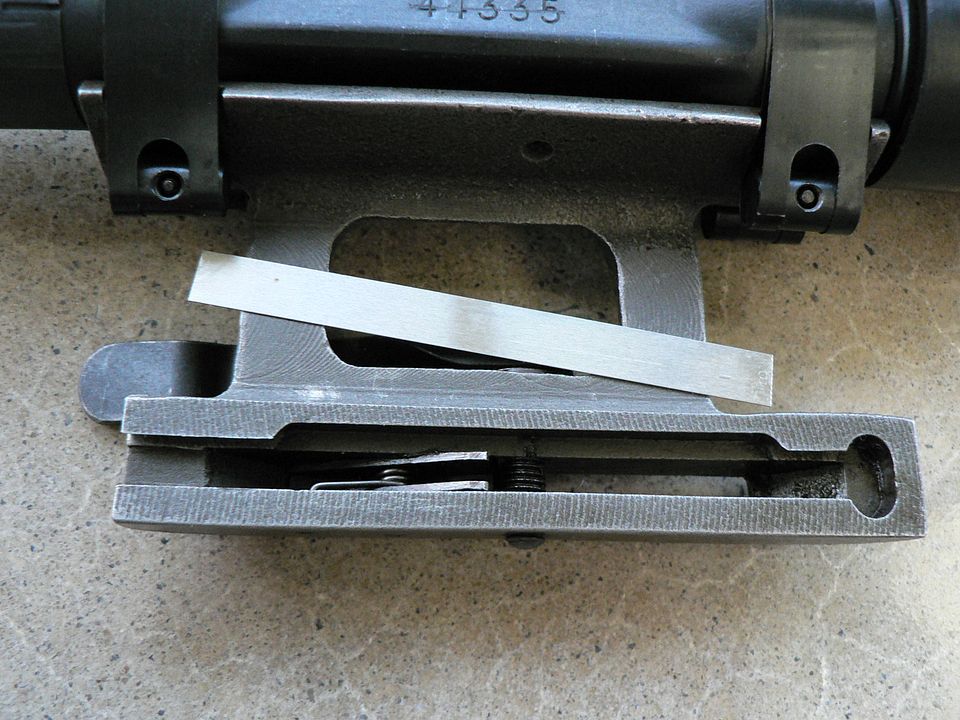
All you need to do is start the mount on the rifle and work it forward slowly as you insert the shim from the front and push it backwards between the mount and the rail. Now, I haven't had this to the rage yet so I cannot guarantee that the mount will not move. But it locks up rigidly so I am fairly certain it'll work. I'll report my findings when I know for sure.
Here we see the gap between the mount and the rail:
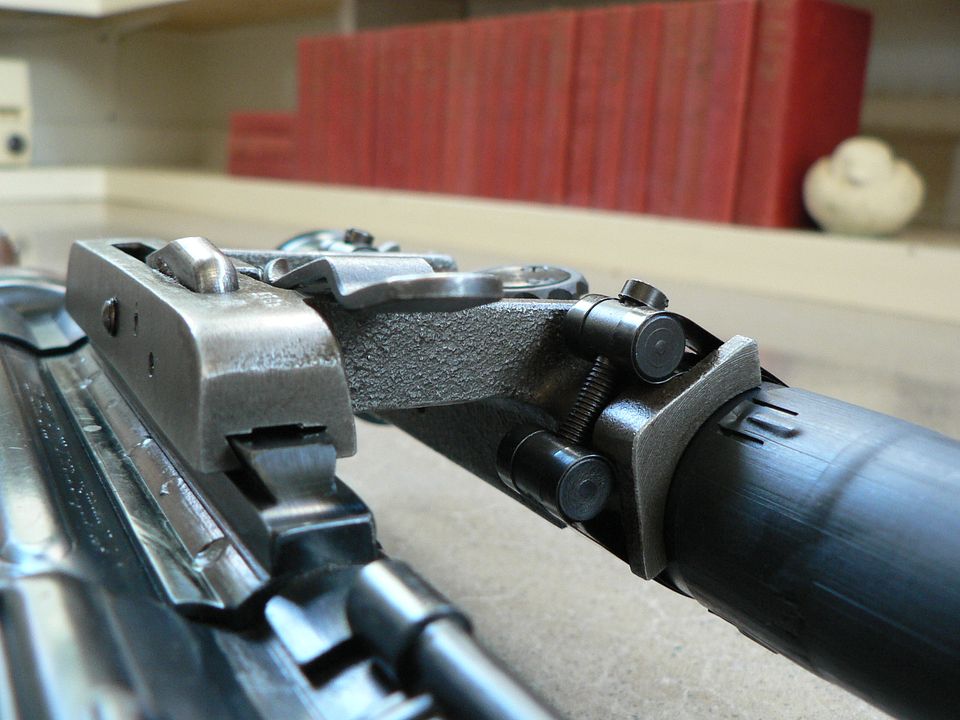
The shim fills this space, allowing the mount to properly lock on the rail.
Not only is the optic useful but it just looks neat mounted on the rifle:
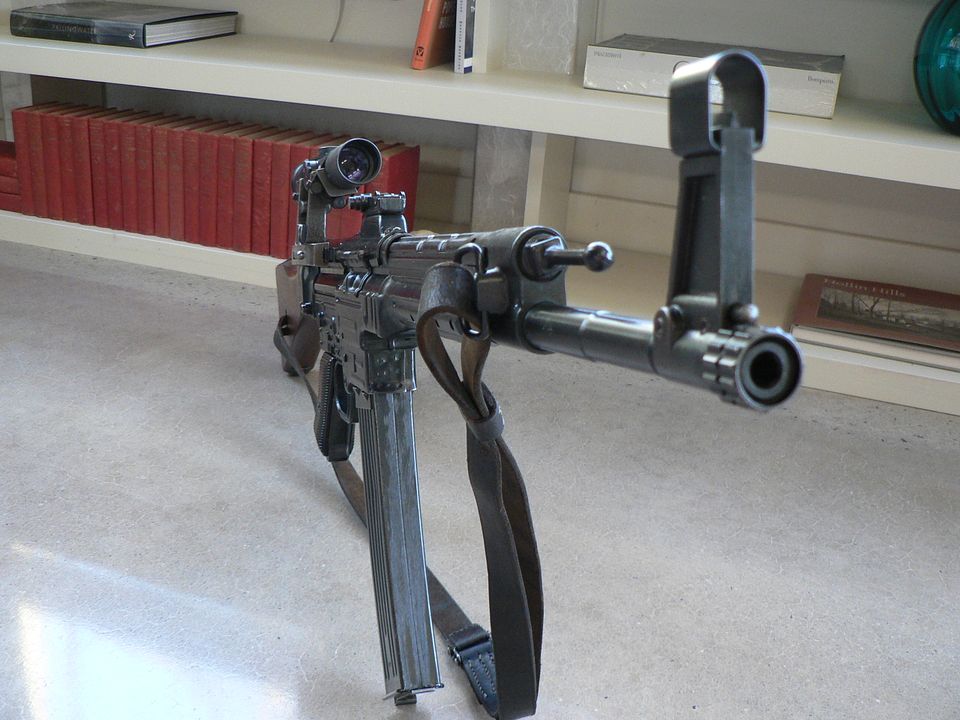
This last picture is a head on view illustrating the offset position of the optic:
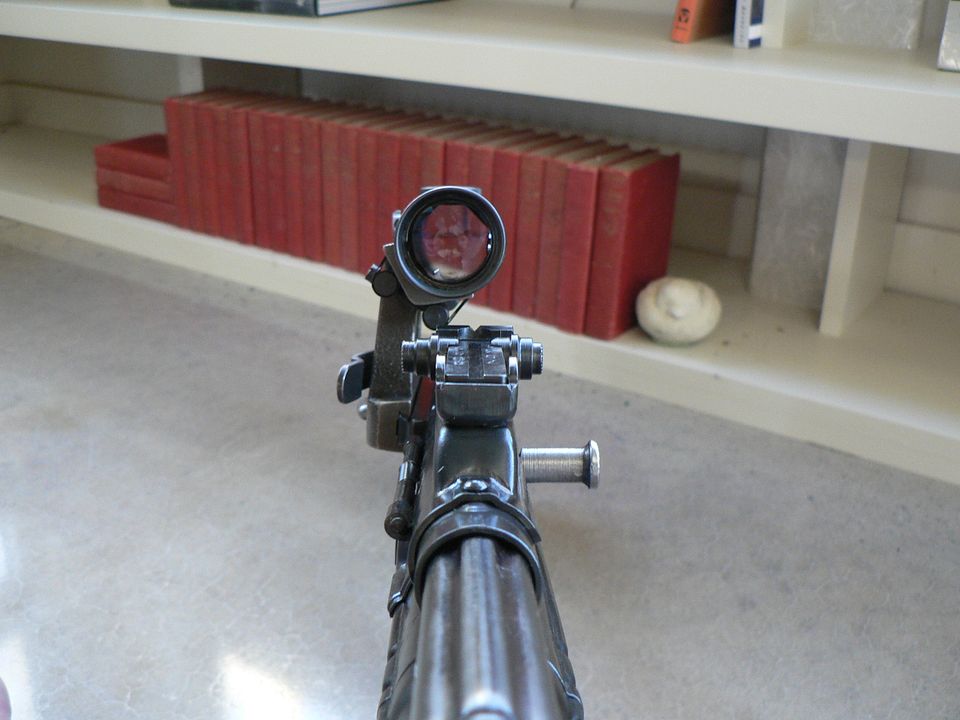
This created parallax problems during trials. There were also dispersion problems and I assume that will still apply today. My advantage is that I'm not taking this to war. It's all just for fun. I'll report back once I get it to the range.
